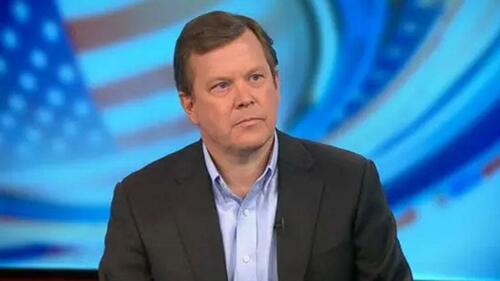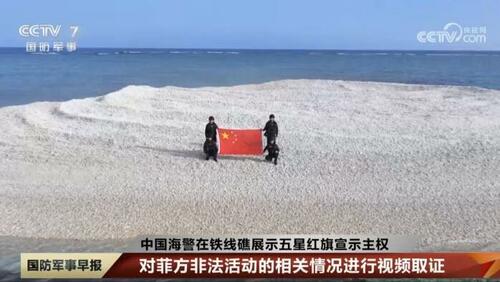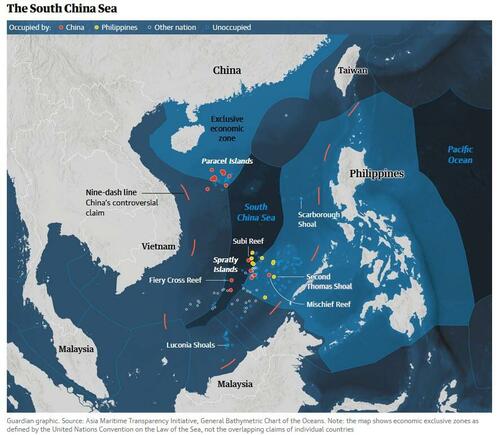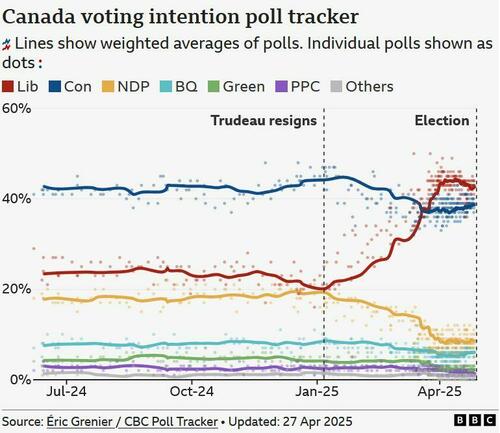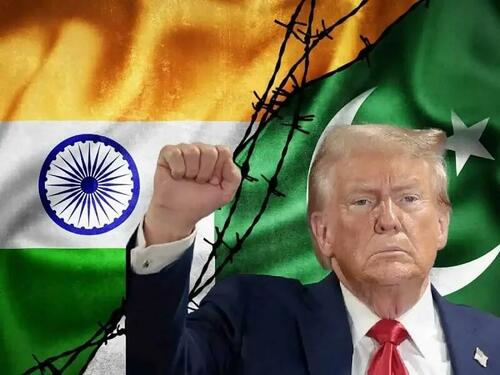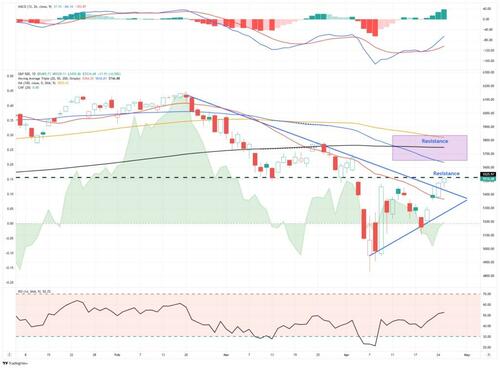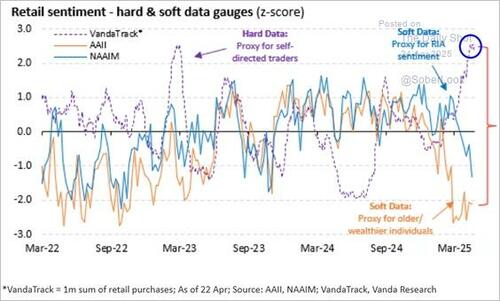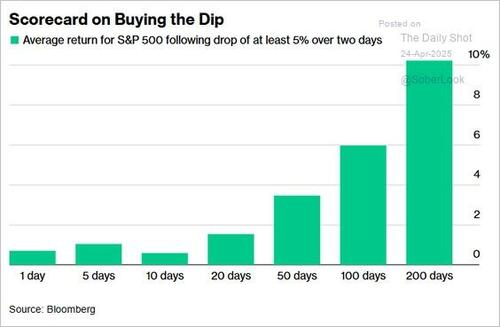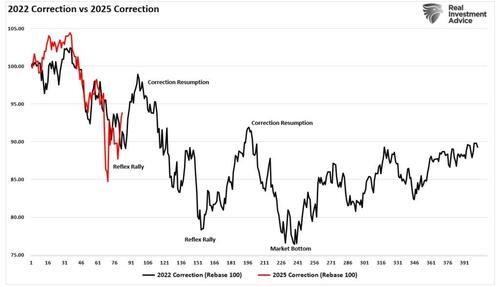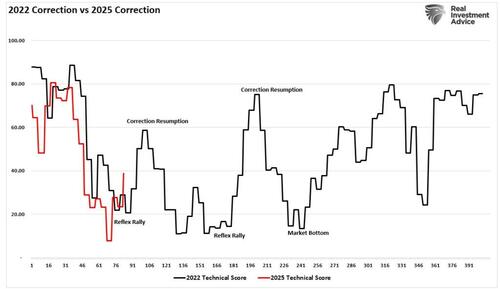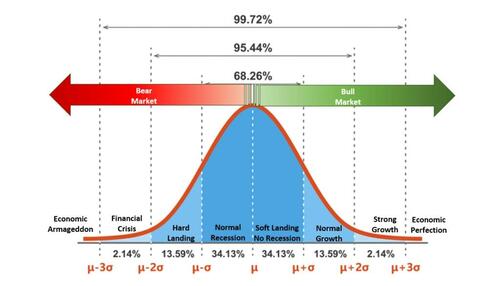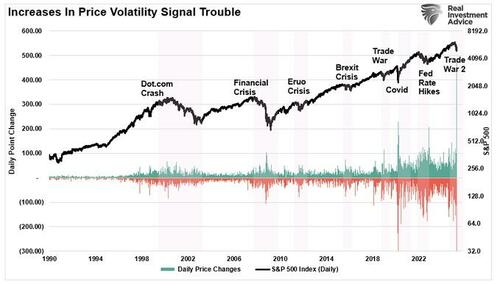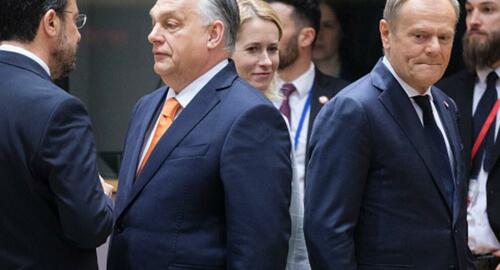Homosexuality is incompatible with the priestly vocation. Otherwise, celibacy itself would lose its meaning as a renunciation.
Distinction Matter - Subscribed Feeds
-
Site: The Unz ReviewThe question is simple: The white race, yes or no? By the end of this century, whites will be on track to becoming minorities in almost all our historic homelands, even within Europe. The majority of births in the United States are already to non-whites. This shift will have major political, economic, religious, and cultural...
-
Site: The Unz ReviewThe nations of Scandinavia, until recently, were idealised as modern, progressive places to live. Their highly educated populace embraced liberal values and eschewed ethnocentric patriotism to open their doors to immigrants, particularly Muslims. They had nothing but token armies, which pursued diversity and equality policies. Pacifism no more: Sweden and Finland, after decades of neutrality,...
-
Site: AntiWar.comHere is yet another example of stunningly craven journalism from the Guardian, entirely illustrative of what is going on across the British establishment media in its coverage of Israeli war crimes in Gaza for the past 18 months. We are now a month on from Israel executing 15 paramedics and hiding their bodies in a … Continue reading "How Is the Media Still Getting the Gaza Murdered Paramedics Story So Wrong?"
-
Site: The Unz ReviewThe nerds who brought us the digital revolution did so without any thought to the obvious consequences. Americans addicted to scrolling their cell phones and enjoying social media are suffering from the numerous threats that the digital revolution brings to them. Not just government spying on them and, if government wishes, setting them up for...
-
Site: Euthanasia Prevention CoalitionAlex Schadenberg
Executive Director, Euthanasia Prevention Coalition
An article published in the Toronto Sun on April 25 and written by Brian Passifiume concerns David Baltzer, a Canadian veteran who was offered euthanasia instead of medical treatment in December 2019.
Baltzer, a two tour Afghanistan combat veteran with the Princess Patricia’s Canadian Light Infantry (PPCLI,) told the Toronto Sun that:
he was offered MAID in Dec. 23, 2019 — possibly making him among the first Canadian soldiers offered therapeutic suicide by the federal government.
“It made me wonder, were they really there to help us, or slowly groom us to say ‘here’s a solution, just kill yourself,”The Toronto Sun reported Baltzer as saying:
“I was in my lowest down point, it was just before Christmas,” he told the Sun.
“He says to me, ‘I would like to make a suggestion for you. Keep an open mind, think about it, you’ve tried all this and nothing seems to be working, but have you thought about medical-assisted suicide?'”Baltzer said that the suggestion left him reeling. Passifiume reported that Baltzer was offered treatment for PTSD (post traumatic stress disorder) after returning from Afghanistan. The treatment was unsuccessful. Baltzer then turned to alcohol and substance abuse to deal with his trauma. Passifiume reported that:The story first came out when when he was interviewed by CAF veteran Mark Meincke, whose trauma-recovery podcast Operation Tango Romeo broke the story.
Meincke said Baltzer’s story shoots down VAC’s assertions blaming one caseworker for offering MAID to veterans, and suggests the problem is far more serious than some rogue public servant.
“It had to have been policy. because it’s just too many people in too many provinces,” Meincke told the Sun.Meincke and Baltzer are calling for a complete reform of the Veterans Affairs.
Meincke said that he knows at least 5 veterans who were offered MAiD by veterans affairs.More articles on this topic: -
Site: Euthanasia Prevention CoalitionThis article was published by Kelsi Sheren on her substack on April 25, 2025.Big shocker Veteran’s Affairs is at it again, the Canadian government, since 2022, is failing our veterans in the most disgusting and disgraceful way possible: by offering them death care instead of healthcare! But Kelsi?! didn’t they say they aren’t doing that anymore?? Yes they sure did, once again Liberal lies. Are we surprised honestly?
In a chilling repeat of a disturbing trend, another Canadian combat veteran has been offered medically assisted suicide (MAiD) instead of genuine support and treatment. My question is when did ending lives become an acceptable, even routine, solution for our veterans suffering from trauma, PTSD, or any other physical and mental health challenges? When did offering death become an easier alternative than providing the comprehensive care our veterans desperately deserve, care we know exists but are unwilling to use or fund.
Veterans, in my opinion deserve compassion, proper treatment, respect, dignity, and unwavering support, but thats just me I guess. We should NEVER be offering an off-ramp to the grave. This continues to be a disturbing, even horrifying trend that not even the Veteran Affairs Minister is aware of. To think that some government case managers, those specifically entrusted with the sacred duty of caring for our veterans, would even contemplate suicide as an option rather than investing the necessary time, resources, and genuine effort into authentic healing and recovery is insane. Our veterans fought and continue to fight for life and liberty and now for their own country to later suggest ending their life. This is one of the dangers on continuing to talk about MAiD as some “life saving amazing program!”
This story, not one we haven’t heard before but were promised would “never happen again” to a sinister and growing pattern, the Liberal government is a profound failure on several fronts. Failing in its moral, ethical, and basic human obligations to protect and care for those who willingly put their lives on the line for our freedoms. I do love how they continue to want to send us to other countries to fight, while pulling this bullshit and asking.. why are retention rates so low?! How could that be?!
What they should be asking themselves is how can we possibly trust a system that suggests death as a viable, acceptable solution? The very thought undermines the trust veterans and their families should rightly place in their government and healthcare system.
So, what can we do to rectify this continued failure? Fire everyone? Restart?
First, a good place to start would be to stop selling veteran’s out to Manulife Insurance and ACTUALLY support them! Next, there must be absolute, unequivocal accountability at every level. (Which we know won’t happen, but hey I’m just a combat veteran who is preaching accountability, something this government knows absolutely nothing about”
Case managers should never, under any circumstances, be authorized or empowered to suggest medical suicide. These case managers need to be made examples of because in 2022 when they were caught the first time, not a damn thing was done.
Counselling suicide should be crystal clear, explicitly stated in operational guidelines, and communicated with zero ambiguity. The word is NO! WE NEVER SUGGEST SOMEONE DIES instead of helping them. Next I would implement mandatory, rigorous oversight and thorough mental health training programs specifically designed around trauma-informed care, ensuring that case managers fully understand their critical role in protecting, preserving, and supporting veterans' lives.
Additionally, complete transparency in reporting any incidents or breaches is non-negotiable, alongside swift and public accountability measures, and what I really mean is heads on spikes. There must be an unequivocal, zero tolerance policy for anyone who recommends death over dedicated, thorough, and compassionate care and support.
Lastly, why is the VA not asking Veterans what they really want to see change? Why is this only done behind closed doors, where only government officials whom not a single one is a veteran by the way are speaking for us. We need to be actively involving veterans themselves in shaping our policies and procedures that directly impact their care, we need to ensure our voices and experiences are genuinely heard and respected.
This is not simply about revising policy, this is fundamentally about basic human decency, dignity, and respect.
It is far beyond time for Canada to truly step up, reform its priorities, and genuinely care for its veterans. Anything less than complete dedication to safeguarding their lives, health, and well-being is a betrayal of every sacrifice our veterans have ever made.
And trust me, the majority of Veterans in this country including myself are nothing but ashamed of this government, how they treat us and how they have hung every single one of us out to dry.
At this point, I’m shocked they don’t just mail us the noose’s themselves.Some previous articles by Kelsi Sheren:- I'm done staying quiet (Link).
- Offered assisted death instead of surgery (Link)
- Dying with Deception. Exposing Dying With Dignity Canada's Dangerous Lies and teh United Nations call for Truth (Link).
- Debunking the ethical argument for assisted dying for minors (Link).
- Franchising Death (Link).
- Let's call MAiD what it is (Homicide) (Link)
- The Death Cult of the Euthanasia Lobby (Link).
-
Site: Edward FeserRecently, my article “A Catholic Defense of Enforcing Immigration Laws” appeared at Public Discourse. Both Therese Cory and Terence Sweeney have raised criticisms of the article. In a new article at Public Discourse, I reply to them.
-
Site: Zero HedgeIsrael Extends Compulsory Service As Manpower Crisis Plagues ArmyTyler Durden Sun, 04/27/2025 - 22:10
The Israeli army has announced that it will extend mandatory service by four months due to a growing manpower crisis, coinciding with an intensification of battles in Gaza and the resurgence of deadly resistance operations against invading troops.
The additional four months will be classified as reserve duty, allowing soldiers to complete a total of three years of military service. The military will also cancel pre-release leave for soldiers. Troops will have to serve a full three years before being discharged.
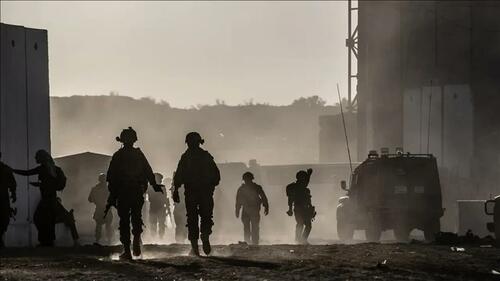 Image via Anadolu Agency
Image via Anadolu Agency
This decision follows months of intense fighting and rising casualties, which have strained troop levels.
The extra four months will provide benefits for the soldiers, given that reserve duty is usually compensated by the Israeli government. The army states that its decision is temporary and aims to help alleviate the current troop shortages.
"At the moment, we are short 10,000 troops, 7,000 of them in combat units," the army said. Israel announced on Saturday the death of Staff Sergeant Neta Yitzhak Kahana, an undercover operative with the Southern Border Police, who was killed during clashes with militants in Gaza.
His death marked the second Israeli soldier to be killed over the weekend. Both were killed in Gaza City’s Shujaiya neighborhood.
Israel has said that it will launch a major offensive across Gaza if no progress is made in truce negotiations. According to Tel Aviv, current operations in Gaza – which have seen the army seize at least 50 percent of the strip’s territory – aim to pressure Hamas in talks, not bring about a complete defeat of the resistance group.
An expanded assault on Gaza would include a massive call-up of reservists and operations in new areas of the strip, the army has said.
Last month, Israeli media reported that the army is facing a crisis in its reserves as a growing number of soldiers have indicated a lack of motivation and an unwillingness to serve. A senior commander in the reserves told Haaretz that there are numerous cases of reservist soldiers refusing to report for duty.
According to estimates, the response rate for the upcoming reservist call-up is expected to be no more than 50 percent. This would mark a 50 percent drop since the start of the war in 2023.
Meetings of the Israeli Security Cabinet revealed “major disagreements” between the political and the military ranks regarding the policies of Prime Minister Benjamin Netanyahu’s government on the genocidal war against the Gaza Strip.
— Middle East Monitor (@MiddleEastMnt) April 27, 2025
Read: https://t.co/RSWsBIiV95 pic.twitter.com/HbtZuXxnVHThe manpower crisis Israel is facing coincides with growing tension between Israel’s political and security establishments. Former Shin Bet chief Ami Ayalon called for civil disobedience against Prime Minister Benjamin Netanyahu following his dismissal of Shin Bet chief Ronen Bar. This came during a protest in Tel Aviv on Saturday.
Israeli protesters have also taken to the streets to demand an immediate exchange agreement in Gaza, where relentless airstrikes are endangering the lives of captives still held by the resistance.
-
Site: Zero HedgeSchweizer: Chinese Chemists Working With Mexican Cartels Creating Fentanyl To Kill AmericansTyler Durden Sun, 04/27/2025 - 21:35
New York Times bestselling author Peter Schweizer is once again speaking out against China's sinister role in fueling America's deadly fentanyl crisis, as President Donald Trump seeks to punish the communist regime for its involvement.
"There are 2000 Chinese nationals in northern Mexico working for the Sinaloa drug cartel," Schweizer, citing DEA data, told The Cats and Cosby Show on Friday. "They’re basically chemists."
"They take the precursor chemicals that, of course, arrive from China and they turn it into the deadly cocktail, which is what people are dying from. They produce pills. People who die of fentanyl overdose, they think they’re talking a Vicodin or Adderall,” he added.
Although fentanyl-related deaths in the U.S. are declining, the crisis remains a grim reality. According to the CDC, a staggering 76,226 Americans died from overdoses involving synthetic opioids—primarily fentanyl—in 2022, delivering a gut-punch to communities nationwide. Provisional data from 2023 shows a slight decline, with 74,702 deaths linked to these powerful substances. Even more striking, the latest CDC and DEA figures estimate approximately 55,126 deaths from synthetic opioids in the 12 months ending September 2024—a significant and hopeful drop, but still a sobering reminder of fentanyl’s ongoing toll.
President Donald Trump has repeatedly pointed the finger at China as a key culprit in America’s fentanyl crisis, accusing Beijing of fueling the epidemic by allowing precursor chemicals to flow to Mexican cartels. In a February 2025 White House statement, Trump accused China of subsidizing companies to export fentanyl-related chemicals, describing the crisis as a “national emergency” killing “approximately two hundred Americans per day.” He’s tied this to his trade agenda, imposing a 20% tariff on Chinese imports—on top of a 10% base tariff—explicitly to pressure Beijing on fentanyl. On April 24, 2025, Trump posted on Truth Social, “Fentanyl continues to pour into our Country from China, through Mexico and Canada, killing hundreds of thousands of our people, and it better stop, NOW!”
China has consistently denied accusations that it is a primary driver of the U.S. fentanyl crisis. Chinese officials argue that the crisis is a U.S. domestic issue rooted in demand, not their supply of precursor chemicals. In March 2025, Foreign Ministry spokesperson Lin Jian stated the root cause of the fentanyl issue lies in the United States itself. Lin also criticized the U.S. for imposing tariffs under the pretext of the fentanyl issue, calling such actions unjustified and counterproductive.
-
Site: Zero HedgeUSDA Withdraws Proposed Rule To Limit Salmonella In Raw PoultryTyler Durden Sun, 04/27/2025 - 21:00
Authored by Rudy Blalock via The Epoch Times (emphasis ours),
The U.S. Department of Agriculture announced on Thursday that it is withdrawing a proposed rule that would have required poultry companies to limit the presence of salmonella bacteria in their products, ending an effort by the past Biden administration to reduce foodborne illnesses linked to contaminated meat.
 Workers process chickens at a poultry plant in Fremont, Neb., on Dec. 12, 2019. Nati Harnik/AP Photo
Workers process chickens at a poultry plant in Fremont, Neb., on Dec. 12, 2019. Nati Harnik/AP Photo
The USDA’s Food Safety and Inspection Service (FSIS) said the decision follows the review of more than 7,000 public comments submitted in response to the proposed rule, which was published in August 2024.
The department stated it will “evaluate whether it should update” current salmonella regulations, according to a Thursday notice from FSIS, which is pending publication in the Federal Register.
The withdrawn rule would have required poultry companies to keep salmonella bacteria below a specific threshold and test for six strains most associated with it, with three found in turkey and three in chicken. Any products exceeding the standard or containing any of those strains would have been forbidden from sale and subject to recall.
The proposal was intended to reduce an estimated 125,000 salmonella infections from chicken and 43,000 from turkey each year, according to USDA data. Salmonella is responsible for approximately 1.35 million illnesses and 420 deaths annually in the United States, most of which are linked to food, according to the Centers for Disease Control and Prevention.
FSIS explained that the proposed framework targeted raw chicken carcasses, chicken parts, comminuted chicken, and comminuted turkey products contaminated with certain salmonella levels and serotypes, which would have been classified as adulterated under the Poultry Products Inspection Act, according to the agency’s April 24 notice. The agency also proposed stricter monitoring, sampling, and recordkeeping requirements for poultry processors, according to the same notice.
The agency said it received 7,089 comments on the proposal, including feedback from industry trade associations, small and large poultry processors, consumer advocacy groups, academics, and state officials.
Decision to Withdraw
Key issues raised included questions about FSIS’s legal authority, the scientific basis for the proposed standards, economic impacts, and the potential burden on small producers, according to the FSIS notice.
“While FSIS continues to support the goal of reducing Salmonella illnesses associated with poultry products, the Agency believes that the comments have raised several important issues that warrant further consideration,” FSIS stated in its withdrawal notice.
The decision to withdraw the rule was welcomed by the National Chicken Council, an industry trade group. “We remain committed to further reducing Salmonella and fully support food safety regulations and policies that are based on sound science, robust data, and are demonstrated to meaningfully impact public health,” said Ashley Peterson, the council’s senior vice president of scientific and regulatory affairs, according to the group’s statement on Thursday.
Peterson criticized the proposed framework as “legally unsound,” based on “misinterpretations of the science,” and likely to have “no meaningful impact on public health.”
She added that it would have led to “an extraordinary amount of food waste” and higher costs for producers and consumers, according to the National Chicken Council.
“We appreciate today’s announcement by FSIS and share their goal of protecting public health,” Peterson said, adding that the council looks forward to working with the agency on future policy.
Sandra Eskin, a former USDA official who helped draft the plan, said the withdrawal “sends the clear message that the Make America Healthy Again initiative does not care about the thousands of people who get sick from preventable foodborne salmonella infections linked to poultry,” according to the Associated Press.
Sarah Sorscher of the Center for Science in the Public Interest compared the proposed rule to the 1994 ban on certain E. coli strains in ground beef, calling it a missed opportunity for a significant food safety victory. “Make no mistake: Shipping more salmonella to restaurants and grocery stores is certain to make Americans sicker,” Sorscher said, according to the Associated Press.
Earlier this month, the USDA delayed enforcement of a separate rule regulating salmonella in breaded and stuffed raw chicken products by six months, pushing the start date from May 1 to Nov. 3. Such products have been linked to at least 14 salmonella outbreaks and over 200 illnesses since 1998, according to the CDC.
From NTD News
-
Site: Zero HedgeTrump Floats Plan To Slash Or Eliminate Income Taxes For Millions Using "BONANZA" Tariff CashTyler Durden Sun, 04/27/2025 - 20:25
President Donald Trump doubled down Sunday on his plan to use tariff revenue to slash - and possibly eliminate - income taxes for millions of Americans.
 Photo: Fox News
Photo: Fox News
The president took to Truth Social to tout his vision, claiming that his sweeping tariffs could lead to big tax breaks for workers making under $200,000 a year.
“When Tariffs cut in, many people’s Income Taxes will be substantially reduced, maybe even completely eliminated. Focus will be on people making less than $200,000 a year,” Trump wrote.
The bold pledge comes as public anxiety grows over the economic fallout from Trump’s aggressive trade policies, which have rattled global markets and fueled fears of higher prices at home.
In the weeks since Trump slapped so-called reciprocal tariffs on dozens of countries - including a staggering 145% levy on Chinese goods, economists have sounded the alarm that the tariffs could backfire, hurting American consumers more than foreign rivals.
That said - not everyone's excited after Trump told TIME Magazine in the April 25 edition that he “love[s] the concept” of raising taxes on millionaires as a means of paying for an extension of the 2017 tax cuts.
“I certainly don’t mind having a tax increase,” Trump told TIME.
“I would be honored to pay more, but I don’t want to be in a position where we lose an election because I was generous, but me, as a rich person, would not mind paying and you know, we’re talking about very little.”
He said it would involve raising taxes on the wealthy to “take care of [the] middle class.”
“But I don’t want it to be used against me politically, because I’ve seen people lose elections for less, especially with the fake news.”
Former White House strategist Steve Bannon told News Nation’s “CUOMO” on Friday that he supported the idea.
“This is being fought behind closed doors right now, and I’m telling you, with the massive tax cut, in addition, he’s going to give the working class and the middle class, the math only works out if you actually increase taxes on the wealthy,” Bannon said.
The former White House strategist said it could help Trump politically if he decided to run again in 2028, despite the Constitution preventing a third term in the Oval Office.
However, on April 23, the day after he sat down with TIME, Trump told reporters at the White House that raising taxes on the wealthy could be “very disruptive” and could lead to a loss of money for the United States.
House Speaker Mike Johnson dismissed the idea in an interview with Fox News.
“I’m not in favor of raising the tax rates because our party is the party that stands against that,” Johnson said on April 23.
He acknowledged that the proposal had been discussed as one of many possible ways to permanently implement personal income tax cuts in the Republicans’ final funding package.
“There were lots of ideas thrown out on the table along this process over the last year, but I would just say for everybody, just wait and see,” Johnson said.
A CBS News poll released Sunday found 69% of Americans believe the Trump administration isn't focused enough on lowering prices. Approval of Trump’s handling of the economy dropped to 42%, down from 51% in early March, Bloomberg reports.
Still, Trump’s team insists their strategy will pay off - eventually.
Treasury Secretary Scott Bessent, appearing on ABC’s “This Week,” defended the president’s approach, saying consumers are still spending and talks are underway with 17 key trading partners to hammer out bilateral deals.
“We have a process in place, over the next 90 days, to negotiate with them,” Bessent said. “Some of those are moving along very well, especially with the Asian countries.”
Bessent also insisted China would have no choice but to return to the negotiating table under pressure from Trump’s new tariff wall.
“Their business model is predicated on selling cheap, subsidized goods to the US,” Bessent said. “And if there’s a sudden stop in that, they will have a sudden stop in the economy, so they will negotiate.”
Treasury Sec. Scott Bessent on China: “Their business model is predicated on selling cheap, subsidized goods to the U.S., and if there is a sudden stop in that, they will have a sudden stop in the economy. So they will negotiate.” https://t.co/DDuPIh4dI1 pic.twitter.com/VZ8WvUno91
— This Week (@ThisWeekABC) April 27, 2025Bessent also explained America's "barbell" economy - in which there is a "financial system and tech sector that is the envy of the world" on one hand, and "a natural resource-economy led by energy" on the other end.
The U.S. has a barbell economy.
— Treasury Secretary Scott Bessent (@SecScottBessent) April 27, 2025
On one end, we have a financial system and tech sector that is the envy of the world.
On the other end, we have a natural resource-economy led by energy.
In between is where working-class Americans have lost out—and we want to fix that. pic.twitter.com/ysVxibNIQ7Trump has claimed that talks with China are ongoing - a claim Beijing has flatly denied. Bessent admitted he didn’t know if Trump and Chinese President Xi Jinping had spoken directly, noting that Chinese officials he saw during a global finance summit last week stuck to safer topics like “financial stability” and “early warnings.”
Despite the rocky start, Bessent said he’s optimistic that a path forward could emerge, starting with a “de-escalation” and leading to an “agreement in principle” - even if a full trade deal takes longer.
Meanwhile, Trump is eyeing sweeping tax changes at home. His 2017 tax cuts are set to expire at the end of 2025, and he has vowed to not only extend them but expand them, exempting workers’ tips, slashing the corporate tax rate to 15%, and possibly wiping out income taxes for working-class Americans.
The House GOP's early-April framework allows for up to $5.3 trillion in tax cuts over the next decade. Trade adviser Peter Navarro has suggested tariff revenue could more than cover that - a claim most economists dismiss as wildly optimistic.
Reports already show that Trump’s tariffs are expected to hit lower-income Americans harder than the wealthy, potentially complicating the president’s pitch to working families.
But Trump, undeterred, appears ready to bet that tariff-fueled tax cuts will give him a powerful message heading into the 2026 midterms, even if voters are feeling the pinch now.
Psst... click here for a preview of our new partnership at ZH Store.
-
Site: Public Discourse
As I showed in a recent article in Public Discourse, the Catholic Church teaches that prosperous nations have a duty to welcome immigrants, but only to the extent they are able, and that governments may restrict immigration out of concerns about security, economic impact, and the prospects of assimilation. In a pair of recent essays, Therese Cory and Terence Sweeney have criticized my article. What follows is a response.
“Relativism” and Other Straw Men
Having documented in my article what Church teaching says about both the duties nations have to immigrants and the qualifications on those duties—along with the duties immigrants have to their host countries—I concluded:
The truth is that the entirety of that teaching—not only what it says about the obligation to welcome the stranger, but also what it says about the limitations on that obligation—must inform our judgments about how many migrants to allow in and under what conditions. And as Aquinas teaches, here “it is not possible to decide, by any general rule” but requires the exercise of the virtue of prudence. As to what prudence calls for, Catholics of good will can reasonably disagree.
Commenting on this passage, Cory writes:
Feser . . . relies on an essentially relativistic notion of prudence—one in which objective moral principles only get us so far, and the rest of the work is done by prudential judgment in a personal realm of mere “difference of opinion,” shielded from objective moral scrutiny. Indeed, the phrase “legitimate difference of opinion about a matter of public policy” places public policy outside the realm of things one can objectively morally evaluate—a view commonly found in company with relativistic notions of prudence.
The bulk of her article then goes on to criticize this “relativistic notion of prudence.” The problem is that I hold no such notion. Nor, frankly, does Cory have any basis for attributing it to me. She has rashly read it into what I wrote, not out of what I wrote. It is a straw man.
Cory herself acknowledges that when making moral decisions in light of a variety of relevant considerations, “my options may be equally good and thus morally indistinguishable. Or poorly informed agents may reach different judgments where one or both are unwittingly wrong, but they disagree ‘legitimately’ in the sense of both acting in good faith.” But, as a charitable reading of my article should have made evident, that is all I meant when I wrote that “as to what prudence calls for, Catholics of good will can reasonably disagree.”
Nowhere do I say, nor would I say, that differing prudential judgments about immigration should be “shielded from objective moral scrutiny.” In no way would I place this area of public policy “outside the realm of things one can objectively morally evaluate.” My point was simply that because the relevant concrete circumstances to which we have to apply moral principle in this area are so complex, it is possible in some cases for there to be “options [that are] equally good and thus morally indistinguishable” (to borrow Cory’s words). And it is also possible for there to be other cases “where one or both [people] are unwittingly wrong, but they disagree ‘legitimately’ in the sense of both acting in good faith” (once again to use Cory’s words).
In fact, Cory and I are essentially in agreement on the general philosophical question of the nature of prudence. So, most of what she has to say is simply misdirected. Nor is this the only case where she attacks a straw man. Criticizing the use I make of the magisterial documents I cite, Cory writes, with respect to one of them:
[The] document . . . takes a more open-ended perspective on the good of society as including that of the potentially admitted refugees [emphasis in the original], rather than being a one-sided consideration of the “economic well-being of its own citizens” as Feser suggests. . . . The Church’s concern, again, is for the good of the newcomers taken together with the preexisting population.
But I never said or implied otherwise. It is true that I emphasize the legitimacy of a government’s taking account of the economic needs of its own population, because that is a consideration that routinely gets ignored in recent discussions about Catholicism and immigration. All the same, I did not deny that the good of immigrants must also be considered. On the contrary, I explicitly acknowledged that “there can certainly be particular cases where the needs of strangers trump those of people closer to us,” and that “we do indeed have obligations to people of other nations, who are part of the common human family of which all nations are members.”
Sweeney attacks a straw man of his own when he alleges that my article “emphasizes only our rights” and neglects “our duty to the stranger.” “Ever deepening our concern with rights,” Sweeney laments, “the modern person ‘closes in on himself’—losing track of the fundamental relationality between self and other.” The unwary reader might imagine from this that my article is grounded in a rights-based libertarian or individualist political philosophy.
But like Cory, Sweeney is attacking a figment of his imagination. There is in my article no emphasis on rights over duties, nor any commitment to individualism. On the contrary, the article explicitly emphasizes that we are “social animals” rather than “atomized individuals,” and that “it is precisely in the contexts of the family and the nation that our social nature is most immediately developed.” And again, I explicitly say that “the needs of strangers [can sometimes] trump those of people closer to us,” and that “we do indeed have obligations to people of other nations, who are part of the common human family.” My point was precisely that we have duties (not just rights), and that our first duty is to those closest to us.
Immigration and Culture
Cory takes issue with my claim that the Church allows that when formulating immigration policy, governments may take account of potential impact on the cultural heritage of a nation. She objects that “the point of section 2241 of the Catechism of the Catholic Church, about respecting cultural heritage, is phrased in terms of the immigrant’s duties to the host, rather than as something governments should consider in admitting immigrants.” But in fact, what that passage says is this:
Political authorities, for the sake of the common good for which they are responsible, may make the exercise of the right to immigrate subject to various juridical conditions, especially with regard to the immigrants’ duties toward their country of adoption. Immigrants are obliged to respect with gratitude the material and spiritual heritage of the country that receives them, to obey its laws, and to assist in carrying civic burdens. (2241)
The Catechism says here that governments may put conditions on immigration “especially with regard to the immigrants’ duties toward their country of adoption.” And it says that among these duties are “to respect with gratitude the . . . spiritual heritage of the country that receives them.” So, contrary to what Cory claims, the Catechism is not talking only about the duties of immigrants, but also about what governments may consider when deciding on immigration policy. Indeed, the Catechism says that governments may consider the country’s “spiritual heritage” precisely because immigrants have a duty to respect it.
Even apart from this particular passage from the Catechism, it stands to reason that governments may take account of a nation’s culture when determining immigration policy. The Compendium of the Social Doctrine of the Church notes that:
A nation has a “fundamental right to existence,” to “its own language and culture, through which a people expresses and promotes . . . its fundamental spiritual ‘sovereignty,’” to “shape its life according to its own traditions,” . . . [and] to “build its future by providing an appropriate education for the younger generation.” (157)
Now, a nation’s government exists precisely for the sake of promoting the common good of its people, which can hardly exclude protecting a nation’s rights. Hence, if a nation has a right to its own language, culture, spiritual sovereignty, and traditions, then it follows that a government can consider what is conducive to protecting these things when deciding on immigration policy.
The Church has also acknowledged that grave social problems can arise when a cultural minority does not respect the cultural heritage of the nation in which it resides. In the encyclical Pacem in Terris, Pope St. John XXIII wrote that such minority groups must always be treated justly, but also warned:
It is worth noting, however, that these minority groups, in reaction, perhaps, to the enforced hardships of their present situation, or to historical circumstances, frequently tend to magnify unduly characteristics proper to their own people. They even rate them above those human values which are common to all mankind, as though the good of the entire human family should subserve the interests of their own particular groups. A more reasonable attitude for such people to adopt would be to recognize the advantages, too, which accrue to them from their own special situation. They should realize that their constant association with a people steeped in a different civilization from their own has no small part to play in the development of their own particular genius and spirit. Little by little they can absorb into their very being those virtues which characterize the other nation. But for this to happen these minority groups must enter into some kind of association with the people in whose midst they are living, and learn to share their customs and way of life. It will never happen if they sow seeds of disaffection which can only produce a harvest of evils. (97)
Similarly, in a 2003 address, Pope St. John Paul II advised governments facing such problems:
If the gradual integration of all immigrants is fostered with respect for their identity and, at the same time, safeguarding the cultural patrimony of the peoples who receive them, there is less of a risk that they will come together to form real “ghettos” in which they remain isolated from the social context and sometimes even end by harbouring a desire to take over the territory gradually.
Pope Francis too acknowledged the problem in some remarks made in 2016:
In theory, hearts must not be closed to refugees, but those who govern need prudence. They must be very open to receiving refugees, but they also have to calculate how best to settle them, because refugees must not only be accepted, but also integrated. . . . [A] political price can be paid for an imprudent judgement, for accepting more than can be integrated. What is the danger when refugees or migrants—and this applies to everybody—are not integrated? They become a ghetto.
A culture that does not develop in relationship with another culture, this is dangerous. . . . I talked with an official of the Swedish government . . . [who] told me of some difficulties they are presently facing, . . . because so many are arriving that there is no time to make provision for them, so that they can find schools, homes, employment, and learn the language. Prudence has to make this calculation.
Culture and Religion
Now, Cory herself acknowledges that “in the abstract, cultural identity looms large as a problem for immigration policy to address.” But she argues that given the actual concrete facts in the American context, “there is little reason in our present circumstances to think that cultural identity will be weighty enough to become a defining moral factor in this domain at all.” She notes that assimilation normally can, and in the American context historically has, occurred in an organic way that has served to enrich rather than disrupt the culture of the nation receiving immigrants. In particular, she notes that Irish, Italian, German, Hungarian, Polish, Chinese, and Jewish immigrants “did not displace American culture; instead, they became part of the life of American culture.”
In fact, I am in agreement with Cory about that much. But it would be fallacious glibly to extrapolate from this example to other contexts, including future immigration into the United States. The crucial factor here, I would argue, is religion. The reason Irish, Italian, German, Hungarian, and Polish immigrants ultimately assimilated so smoothly into American culture is that they shared the same Christian religious view of the world that already prevailed in the United States. And while Chinese and Jewish immigrants did not, they could nevertheless assimilate smoothly as well, because their religious traditions were not missionary in character. For example, Confucianism does not require that the entire world become Confucian, and Judaism does not require that the entire world become Jewish. It was easy, then, for new Chinese and Jewish Americans to “live and let live” with their predominantly Christian fellow citizens, and for Christian citizens to adopt a similar attitude toward them.
But things are by no means guaranteed to go as smoothly with religions that are aggressively missionary in character. Of course, Christianity and Islam are both missionary religions. Both have the conversion of the entire world as their goal. Historically, both have also held that state power can legitimately be used to facilitate the realization of this goal. Hence, the governments of Christian countries have traditionally given special favor to Christianity, and the governments of Islamic countries have traditionally given special favor to Islam.
There is today a crucial difference, however. In modern times, Christians have tended by and large to abandon the use of state power to uphold Christianity. I put to one side for present purposes the question whether this change was theologically sound or practically advisable. The point is that this is, as an empirical matter, how most (even if not all) Christians today view relations between Church and state. But no parallel change has taken place in Islam. While there are some Muslims who have adopted Western attitudes on this matter, the majority have not. As the Pew Research Center has reported, “overwhelming percentages of Muslims in many countries want Islamic law (sharia) to be the official law of the land.”
To be sure, there are varying attitudes among Muslims about what, specifically, this should entail. Some want Islamic law to govern the Muslim minority communities within a nation, but not necessarily the whole country. Some want only certain aspects of Islamic law to be enforced. Some might hold that while it would in theory be best for Islamic law to be the law of the land, in practice this is not a reasonable goal in a country while Muslims remain a minority. The point, though, is that Muslim attitudes about the relationship between government and religion are in general very different from those that prevail among modern Westerners.
Now, in light of this fact, one would expect that social tensions of the kind warned about in the remarks from popes John XXIII, John Paul II, and Francis quoted above, would exist in Western countries that have taken in large numbers of Muslim immigrants. And indeed, that is what we find, as others have pointed out here at Public Discourse.
Whatever one thinks about this situation, two things are evident. First, for the reason I’ve explained, one cannot with confidence extrapolate from the example of immigration into the U.S. in the late nineteenth and early twentieth centuries. Hence Cory is jumping to conclusions when she says that “there is little reason in our present circumstances to think that cultural identity will be weighty enough to become a defining moral factor in this domain at all.” Second, it is therefore reasonable to include these difficulties of assimilation among the factors governments may consider when deciding on immigration policy—as even Pope Francis acknowledges, as the remarks quoted above make clear.
A Matter of Emphasis
Sweeney, for his part, acknowledges that I was correct to raise the considerations I did in my original article. Indeed, he writes:
[Feser’s] essay is an important reminder of the need for balance in understanding the question of immigration. The political community is a real expression of the fundamental sociality of the human person. We ought to love the us that we are part of. We rightly prioritize our own communities, and we have a legitimate role in determining who can join this community and how. It is because of this reality that a nation has a right to its borders and “governments have the right to prevent illegal immigration. . . .”
He is right to emphasize this right. Those who advocate “a virtually ‘open borders’ position in the name of Catholicism” should indeed read Feser’s article, because such positions are incompatible with a Catholic stance. Countries have a legitimate right to regulate the who, how, and how many of immigration.
But he should have stopped there, because the rest of what he says conflicts with this acknowledgment. Sweeney’s main complaint is that the emphasis in scripture and tradition has been on the obligation to welcome the stranger, whereas the emphasis in my article is on the qualifications on this obligation.
He is correct that scripture and tradition put emphasis on welcoming the stranger whereas my article puts emphasis on the rights of nations and the duties of immigrants. But my article was not intended as a comprehensive, stand-alone presentation of Catholic teaching on immigration. It was intended, rather, to correct an imbalance.
Most people historically have tended too strongly to favor their own families and nations, at the expense of our duties to the stranger. That is arguably why scripture and tradition put the emphasis on the latter. But in modern Western nations, there is a strong tendency toward the opposite extreme vice—toward what the philosopher Roger Scruton has called “oikophobia” or hostility toward one’s own nation, indeed toward the very idea that one has any special duties to one’s own nation. This is in part precisely a consequence of the individualism and neglect of our social nature that Sweeney rightly decries.
As I noted in my article, when Vice President J. D. Vance appealed to the ordo amoris or “order of charity,” he was simply calling attention to a longstanding theme in Christian moral theology, one given classic expression by thinkers of the stature of Augustine and Aquinas. He was merely noting that while the Christian tradition insists that we have duties to all, it also acknowledges that by nature our primary obligations are to those closest to us. But judging from the reaction to his remarks, a great many people today, including many who identify as Christians, are hostile to this idea.
Certainly much of the reaction I saw on social media rejected the very idea of the ordo amoris, as if it were somehow an embarrassment to the Christian tradition. Many did not even take the view that while Vance was correct to say that we have special duties to our own nation, he was drawing a mistaken conclusion from this fact. Rather, they objected to the very idea that we have any special duties to our own nation. Even the pope’s recent remarks on the immigration controversy, while not explicitly rejecting the idea of the ordo amoris, seemed to refrain from conceding that there is any special obligation to one’s own nation.
For these reasons, the emphasis of my article was on combating the extreme vice opposite to the one the Christian tradition has usually focused on. That is to say, it was meant as a reminder that while people are often prone to put too much emphasis on what is good for their own nation, it is also possible to put too little emphasis on it.
The remarks from Sweeney that I quoted above indicate that he agrees with me about this—and, moreover, that he agrees the problem is a real one today. But if that is indeed the case, it is not clear to me what the point was in writing a whole article criticizing my essay, as if our views were somehow at odds.
Image by Elizabeth and licensed via Adobe Stock.
-
Site: Zero HedgeTrump Wants US Ships To Travel Through Panama, Suez Canals for FreeTyler Durden Sun, 04/27/2025 - 19:50
Authored by Jacob Burg via The Epoch Times,
President Donald Trump said on April 26 that America’s military and commercial ships should be allowed to pass through the Panama and Suez canals “free of charge.”
“Those Canals would not exist without the United States of America,” Trump wrote on his Truth Social platform.
“I’ve asked Secretary of State Marco Rubio to immediately take care of, and memorialize, this situation!”
Stretching across the isthmus that connects North to South America, the Panama Canal allows ships to quickly traverse between the Atlantic and Pacific oceans, carrying roughly 40 percent of U.S. container traffic yearly.
American and British leaders and businessmen discussed plans for building the canal throughout the 1800s as a way to quickly and cheaply transport goods without having to travel around the southern tip of South America to get between the Pacific and Atlantic oceans. The United States built the canal between 1903 and 1914.
President Jimmy Carter negotiated the Torrijos-Carter Treaties, ratified by the Senate in 1978, that would set in motion the relinquishing of control of the canal to Panama.
That finally came to fruition in 1999.
Trump has previously said that he wants to “take back” the canal and bring it under U.S. control, suggesting that he would not exclude economic or military force from regaining the shipping passageway.
Earlier this month, Defense Secretary Pete Hegseth said the United States was partnering with Panama to secure the Panama Canal while countering China’s “malign influence.”
“The Panama Canal is key terrain that must be secured by Panama, with America and not China,” Hegseth said at a joint press conference with Panamanian Public Security Minister Frank Abrego.
The two nations signed a memorandum of understanding on bilateral security matters in the region that will see an expansion of joint training exercises between the United States and Panama while improving interoperability between their militaries, the secretary said.
The Suez Canal, which connects the Mediterranean to the Red Sea, was constructed in the late 1800s after plans to build the shipping corridor had been discussed since the time of Ancient Egypt.
However, recent military conflicts and terrorist attacks in the area have disrupted shipping traffic moving through the Suez Canal, forcing some ships to reroute around Africa’s southern Cape of Good Hope instead of using the corridor.
The Houthi terrorist group, backed by Iran, have caused repeated shipping disruptions in the area, according to the Atlantic Council, which estimates that the canal generated roughly $9.4 billion in revenue for Egypt in 2022–2023.
The Trump administration has approved multiple targeted strikes on the Houthis this year. Trump said the strikes would continue until the group no longer disrupts shipping between the Mediterranean and the Red Sea.
-
Site: The Orthosphere
It is not . . . because a people possesses a definite belief that it is healthy and vigorous, but rather because the people is healthy and vigorous that it adopts or invents the belief which is useful to itself. In the same way, it is not because it ceases to believe that it falls into decay, it is because it is in decay that it abandons the fertile dream of its ancestors without replacing this by a new dream, equally fortifying and creative of energy.”
René-L. Gérard, “Civilization in Danger” (1912)
This line is not from the René Gérard beloved by our late and lamented colleague Thomas Bertonneau, but is rather from an obscure Belgian barrister who long ago argued that Western civilization was going to hell. Most of this Gérard’s contemporaries disagreed and thought they were basking in Europe’s belle époque or golden age; but even before the Great War there were a few who smelled the rot of decadence beneath the enchanting perfume.
The heart of this decadence was Paris, then celebrated as the “city of light; the heart of Parisian decadence was a cabaret called the Moulin-Rouge (Red Windmill). Like the decadent artists who frequented it, the Moulin-Rouge was in the business of glorifying sin. The decadent artists took vice as their subject; the Moulin-Rouge sold lewdness as good fun. The English art critic Arthur Simone was part of that scene and left trenchant word pictures of two of the most famous dancers at the Moulin-Rouge. The first was a vamp called La Goulue (“the Ravenous”), whose allure was her manifest evil.
 “La Goule was a strange and tall girl, with a vampire’s face, the profile of a bird of prey, a tortured mouth, and metallic eyes . . . . I heard all kinds of legends in regard to her life: death and sensuality and blood . . .”**
“La Goule was a strange and tall girl, with a vampire’s face, the profile of a bird of prey, a tortured mouth, and metallic eyes . . . . I heard all kinds of legends in regard to her life: death and sensuality and blood . . .”**The second was a coquette called La Mélinite (“the Bomb”), whose fascination was faux innocence mocked by a whore.
“Young and girlish, the more provocative because she played a prude, with an assumed modesty, décolletée [plunging neckline] nearly to her waist . . . . She had long black curls around her face, and had about her a depraved virginity.”**
The Bomb’s real name was Jane Avril and the decadent artist Henri Lautrec famously painted her in an attitude of mock distress while entwined by a libidinous serpent.
* * * * *
Decadence is more easily detected than defined. The word literally means to decay or fall apart and moral decadence is therefore the loosening of moral bonds. As the preceding section shows, this loosening often begins by making fun of sin. It often ends with those erstwhile sins idolized as the highest sort of fun. But moral decadence is only part of a larger process of social and political decay, the whole characterized by loosening of bonds and decomposition of the social and political whole.
E Pluribus Unum—one out of many—is the motto of the United States. The motto of decadence is many out of one.
* * * * *
G. K. Chesterton gives an interesting illustration of social decadence when he says the essence of decadence is illustrated when a people stops dancing in groups and divides into paying spectators and dancers who are paid. He calls the later “skirt-dancers,” which means dancers hired to kick their heels and flash their knickers like La Goule (the Ravenous) and La Mélinite (the Bomb).
“That is the whole essence of decadence, the effacement of five people who do a thing for fun with one person who does it for money.”***
Economic specialization is decadent because it disintegrates what had been a unified world of common experience. It replaces the old and durable bond of social sympathy with the new and provisional bond we call the cash nexus. It transforms countrymen into customers, contractors and clients.
Social decadence is therefore connected with economic growth.
Political decadence is likewise connected to the growth of political power. At least for a time. As Chesterton explains:
“It may be said with rough accuracy that there are three stages in the life of a strong people. First, it is a small power, and fights small powers. Then it is a great power, and fights great powers. Then it is a great power, and fights small powers, but pretends that they are great powers, in order to rekindle the ashes of its ancient emotion and vanity.”†
Chesterton says that the third stage is a “symptom of decadence” and was exhibited “very badly” by England in its war against the Boers, and even “worse” by America in its war against Spain.
“After that, the next step is to become a small power itself.”†
* * * * *
Every decadent society is marked by loud calls for a return to the beliefs that prevailed when that society was healthy and vigorous, but that obscure Belgian barrister René-L. Gérard tells us those who make such calls mistake a symptom of decadence for its cause. A society is not decadent because it has abandoned the faith of its fathers, but has rather abandoned the faith of its fathers because it is falling apart.
The old-time religion was in fact based on consciousness of a deeper cohesion that is gone. The zeal of the old-time religion was likewise consciousness of a deeper social vitality that is, likewise departed.
When a man prescribes a return to religion as the remedy to moral, social, and political decadence, he is no more helpful than a physician who suggests that his ailing patient return to health. If the society were sound enough to be capable of religion, it would return to the old-time religion or find something better. But a decadent society is incapable of religion because it is not sound.
“When the vital instinct of a people is healthy, it readily suggests to that people the religious and moral doctrines which ensure its survival.”††
When the vital instinct of a people is feeble and faltering, however, maintenance or discovery of sound religious and moral doctrines is just as difficult as everything else is when a people that is feeble and faltering. Although their economy may still be growing, their unified world of common experience is disintegrating under the hammer of specialization. The vitiating rot may be disguised by spectacular chastisements of refractory savages. But behind such apparent strength, the people is falling apart, and a people that is falling apart will be spiritually senile, morally fuddled, and baffled in its very soul.
“Races grow old like individuals, like everything which lives. At the end of a certain number of centuries of intense and progressive life, their vitality grows weak, they disappear or they slumber.”†††
*) René-L. Gérard, “Civilization in Danger,” The Hibbert Journal, 10.2 (Jan. 1912), pp. 273-289 , pp. 282-283.
**) Arthur Symons, Parisian Nights: A Book of Essays (London: Beaumont Press, 1926), p. 4.
***) G. K. Chesterton, Heretics (London: Lane, 1919), p. 230.
†) Chesterton, Heretics, p. 265.
††) Gérard, “Civilization,” pp. 284-285.
†††) Gérard, “Civilization,” pp. 286. -
Site: Zero HedgeIndia's Modi Vows 'Harshest Response' To Terror Attack Amid 'Unprovoked' Gunfire 'Initiated By Pakistan'Tyler Durden Sun, 04/27/2025 - 18:05
Indian and Pakistani relations are once again in full crisis mode, and Sunday marks the third day of reports of sporadic border fire at army outposts between the nuclear-armed neighbors and historic enemies, following last Tuesday's terror attack in India-administrated Kashmir, which killed 26 Indian tourists in the mountainous, remote region.
Indian Prime Minister Narendra Modi has issued a new statement vowing that the terrorists widely being referred to as Pahalgam attackers "will be served with the harshest response" and that India will seek justice "to the ends of the earth".
 Indian Army outpost, via PTI
Indian Army outpost, via PTI
The Indian army over the weekend announced there has been "unprovoked" firing "initiated by Pakistan" along the Line of Control (LOC)_ which divides Kashmir into two. Pakistan in the aftermath of the accusation neither confirmed nor denied.
The New York Times described Saturday that "Pakistani solders fired at an Indian position first and India responded in kind, according to local news reports, which said that "the exchange was brief and that there were no casualties." Precise locations of these live fire incidents have not been disclosed.
Days into the crisis and land borders have been shut, visas and military exchange programs mutually canceled, and a landmark water treaty has been suspended.
Pakistan’s PM Sharif meanwhile said his country is ready to defend its sovereignty but offered willingness to establish a "neutral" international investigation into the attack.
Sharif is further scrambling to get major global powers in Pakistan's corner, as he calls for the independent investigation. He has welcomed China and Russia's participation, as well as Iran.
Pakistani Defence Minister Khawaja Asif has told RIA Novosti "I think that Russia or China or even Western countries can play a very positive role in this crisis, and they can even create an investigation team … to investigate whether India is lying or Modi is telling the truth." He added, "Let the international team find out."
Shariff's office also issued the following: "The prime minister of Pakistan said that his country seeks peace in the region and that if Iran wishes to play a role in this regard, Islamabad will welcome it."
Pakistani Kashmiris play cricket unfazed by gunfire echoing from the India-Pakistan Line of Control pic.twitter.com/A376w9qGKZ
— RT (@RT_com) April 27, 2025But if gunfire continues to be exchanged between the two militaries, also amid reports that Pakistani visa holders are being promptly booted from the country amid the diplomatic crisis - clashes could accelerate toward open war. The two rivals are one more major incident away, after India accused Pakistan of harboring the terrorists that massacred the civilians in Kashmir last week.
Chief Minister of Jammu and Kashmir Omar Abdullah has meanwhile said there must be a "decisive fight against terrorism and its origin."
Unverified videos of gunfire along disputed Line of Control have been widely circulating...
Video circulating of gunfire reportedly heard between India and Pakistan: pic.twitter.com/ML0pGbaiLS
— BRICS News (@BRICSinfo) April 26, 2025"People of Kashmir have come out openly against terrorism and the murder of innocent people, they did this freely & spontaneously. It’s time to build on this support and avoid any misplaced action that alienates people," Abdullah wrote on X.
"Punish the guilty, show them no mercy but don’t let innocent people become collateral damage," he added, voicing fears that the local population is being subject to brutal tactics by India's police and military as they hunt for the culprits of Tuesday's attack. Will this crisis explode? The United Nations and international countries are urging both sides to walk back from the brink.
-
Site: Henrymakow.com
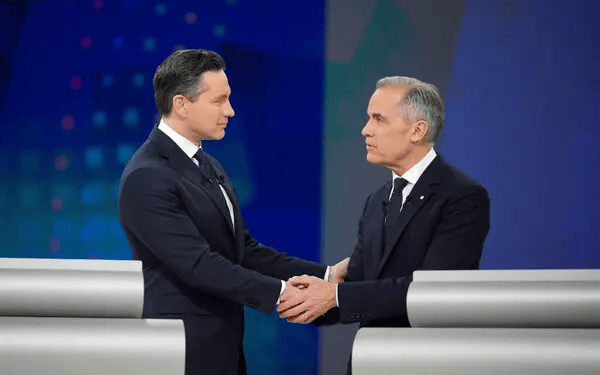 (Left, the hidden handshake)Pierre Poilievre's election campaign reminds me ofAndrew Scheer's lacklustre losing Campaign in 2020.Scheer's campaign lacked a killer instinct. TV Attack ads.Why did the Tories pull their punches again in 2025?Is this election fixed?Is this why no one picked up on Carney being a closet homosexual?The fix is in."Woke Canadians hate Trump more than they love Canada"Canadian--"Woke Canadians hate Trump.I tried to contact the conservatives to change tactics or they would lose.Instead they parrot axe the tax on every tv ad .They needed to expose Carney as a You Will Own Nothing campaign against his cult religion of the Wef.Show the Davos elite flying in their planes.Show that the Wef is the Trillion dollar private club.Show the Clips of Carney bragging about him being one of the elite."by Martin Armstrong(henrymakow.com)In Canada's parliamentary system, the formation of a government depends on the number of seats won in the House of Commons, NOT the popular vote. This is highly confusing to Americans, for the outcomes can be very distorted.If Pierre Poilievre (Conservative Leader) Wins More Seats, what happens?If the Conservative Party wins the most seats (even without a majority), Poilievre would typically be invited by the Governor General to form a government as Prime Minister. He could attempt to govern with a minority, seeking support from other parties on key votes. If no party has a majority, Poilievre would need to demonstrate he can maintain the confidence of the House and form informal alliances or ad-hoc agreements with other parties.
(Left, the hidden handshake)Pierre Poilievre's election campaign reminds me ofAndrew Scheer's lacklustre losing Campaign in 2020.Scheer's campaign lacked a killer instinct. TV Attack ads.Why did the Tories pull their punches again in 2025?Is this election fixed?Is this why no one picked up on Carney being a closet homosexual?The fix is in."Woke Canadians hate Trump more than they love Canada"Canadian--"Woke Canadians hate Trump.I tried to contact the conservatives to change tactics or they would lose.Instead they parrot axe the tax on every tv ad .They needed to expose Carney as a You Will Own Nothing campaign against his cult religion of the Wef.Show the Davos elite flying in their planes.Show that the Wef is the Trillion dollar private club.Show the Clips of Carney bragging about him being one of the elite."by Martin Armstrong(henrymakow.com)In Canada's parliamentary system, the formation of a government depends on the number of seats won in the House of Commons, NOT the popular vote. This is highly confusing to Americans, for the outcomes can be very distorted.If Pierre Poilievre (Conservative Leader) Wins More Seats, what happens?If the Conservative Party wins the most seats (even without a majority), Poilievre would typically be invited by the Governor General to form a government as Prime Minister. He could attempt to govern with a minority, seeking support from other parties on key votes. If no party has a majority, Poilievre would need to demonstrate he can maintain the confidence of the House and form informal alliances or ad-hoc agreements with other parties.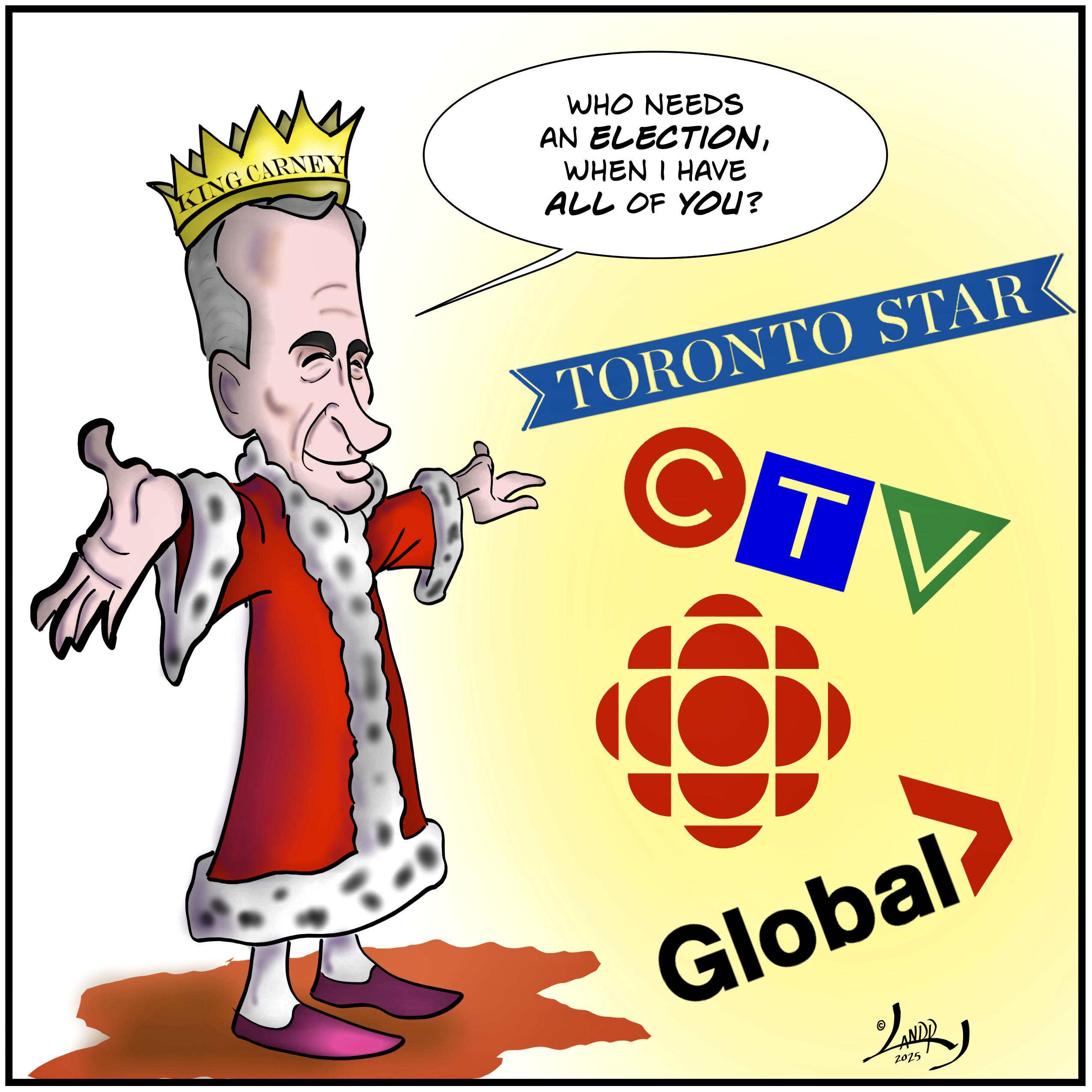 Mark Carney would NOT negotiate with Trump and would certainly make the trade war a real thing. He could form a government despite winning fewer seats than the Conservatives by negotiating to create a coalition or formal agreement with other parties, such as the NDP or Bloc Québécois, to collectively hold a majority of seats, even if he receives fewer votes than Poilievre.Now let's dive deeper. Since Mark Carney is Canada's 24th Prime Minister, he might try this first, but if Poilievre's party has the most seats, constitutional convention usually gives him the first chance to test the House's confidence. If Poilievre fails to secure confidence, losing what is called a throne speech or budget vote, then the Governor General could then invite Carney to try forming a government with cross-party support.In Canada, a government survives only if it retains majority support in key votes. Back in 2008, a proposed opposition coalition tried to replace Stephen Harper's minority government, but Harper prorogued Parliament to avoid a confidence vote. This underscores the political games at play that are not just procedural nature but backroom deals.Therefore, on Monday, if Poilievre's party wins the most seats, he will likely become Prime Minister. However, Carney could only form a government if he secured a majority coalition and Poilievre failed to win confidence, a rare and politically contentious scenario.This is why Carney is a real threat to Canada, for he has made it clear that he is a globalist and will destroy Canada's economy to try to overthrow Trump, just as Zelensky has done to his country, also on the Globalists' directives.--
Mark Carney would NOT negotiate with Trump and would certainly make the trade war a real thing. He could form a government despite winning fewer seats than the Conservatives by negotiating to create a coalition or formal agreement with other parties, such as the NDP or Bloc Québécois, to collectively hold a majority of seats, even if he receives fewer votes than Poilievre.Now let's dive deeper. Since Mark Carney is Canada's 24th Prime Minister, he might try this first, but if Poilievre's party has the most seats, constitutional convention usually gives him the first chance to test the House's confidence. If Poilievre fails to secure confidence, losing what is called a throne speech or budget vote, then the Governor General could then invite Carney to try forming a government with cross-party support.In Canada, a government survives only if it retains majority support in key votes. Back in 2008, a proposed opposition coalition tried to replace Stephen Harper's minority government, but Harper prorogued Parliament to avoid a confidence vote. This underscores the political games at play that are not just procedural nature but backroom deals.Therefore, on Monday, if Poilievre's party wins the most seats, he will likely become Prime Minister. However, Carney could only form a government if he secured a majority coalition and Poilievre failed to win confidence, a rare and politically contentious scenario.This is why Carney is a real threat to Canada, for he has made it clear that he is a globalist and will destroy Canada's economy to try to overthrow Trump, just as Zelensky has done to his country, also on the Globalists' directives.--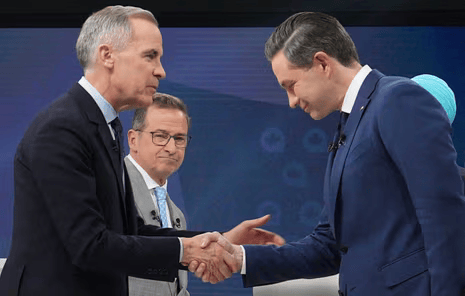 (left, Masonic thumb on knuckle handshake and nod of submission)The Fix is IN!The conservatives failed to pivot against the Trump screw up.Trump has push the Canadians right into the globalists arms.Is Trump that stupid.He should have endorsed the PPC party to put the floodlights on Pierre.Pierre walks and talks like Trump..Canada is not awake enough to see the globalist plot.Woke Canadians hate Trump.I tried to contact the conservatives to change tactics or they would lose.Instead they parrot axe the tax on every tv ad .They needed to expose Carney as a You Will Own Nothing campaign against his cult religion of the Wef.Show the Davos elite flying in their planes.Show that the Wef is the Trillion dollar private club.Show the Clips of Carney bragging about him being one of the elite.Show the clips of Klaus bragging about penetrating Canada including the Ndp.Show the clips of Klaus , Yuval Noah actually saying what will we do with all these useless people.The Wef clips on 15 minute cities, mocking God, chipping us, becoming Gods, and them saying on camera we need to reduce the population by BILLIONS.WHY did the conservatives not hit back?I see that on social media the people all think Carney is a financial wizard with experience.Liberal supporters think the Wef is a harmless think tank.They have spun a counter conspiracy that the IDU is the threat .The IDU is a far right wing Trump ideologicalReligious cult.---------Canada- The Reality from a Canadian"By almost any metric, Canada is worse off than it was 10 years ago when the Liberals took power. Canadians are poorer. Public services have deteriorated. People are dying waiting for medical care. Even life expectancy and the birthrate have dropped. And that's not all. While housing costs have gone up by $43 per day since the Liberals were elected, violence -- including gun violence -- has spiked across the country. The national debt has increased, military preparedness has dropped and the economy has stagnated.-Carney's Globalist Agenda Will Destroy Canada (and result in Alberta to join the US)Carney is lying about everything. He is telling people the US is over and Canada will now lead the world. Anyone can look up the facts. U.S. total trade is 22.7% of world trade. $32.1 trillion. Canada's total trade is $1.6333 trillion, or just 5.1%. He is lying to the public and the world.
(left, Masonic thumb on knuckle handshake and nod of submission)The Fix is IN!The conservatives failed to pivot against the Trump screw up.Trump has push the Canadians right into the globalists arms.Is Trump that stupid.He should have endorsed the PPC party to put the floodlights on Pierre.Pierre walks and talks like Trump..Canada is not awake enough to see the globalist plot.Woke Canadians hate Trump.I tried to contact the conservatives to change tactics or they would lose.Instead they parrot axe the tax on every tv ad .They needed to expose Carney as a You Will Own Nothing campaign against his cult religion of the Wef.Show the Davos elite flying in their planes.Show that the Wef is the Trillion dollar private club.Show the Clips of Carney bragging about him being one of the elite.Show the clips of Klaus bragging about penetrating Canada including the Ndp.Show the clips of Klaus , Yuval Noah actually saying what will we do with all these useless people.The Wef clips on 15 minute cities, mocking God, chipping us, becoming Gods, and them saying on camera we need to reduce the population by BILLIONS.WHY did the conservatives not hit back?I see that on social media the people all think Carney is a financial wizard with experience.Liberal supporters think the Wef is a harmless think tank.They have spun a counter conspiracy that the IDU is the threat .The IDU is a far right wing Trump ideologicalReligious cult.---------Canada- The Reality from a Canadian"By almost any metric, Canada is worse off than it was 10 years ago when the Liberals took power. Canadians are poorer. Public services have deteriorated. People are dying waiting for medical care. Even life expectancy and the birthrate have dropped. And that's not all. While housing costs have gone up by $43 per day since the Liberals were elected, violence -- including gun violence -- has spiked across the country. The national debt has increased, military preparedness has dropped and the economy has stagnated.-Carney's Globalist Agenda Will Destroy Canada (and result in Alberta to join the US)Carney is lying about everything. He is telling people the US is over and Canada will now lead the world. Anyone can look up the facts. U.S. total trade is 22.7% of world trade. $32.1 trillion. Canada's total trade is $1.6333 trillion, or just 5.1%. He is lying to the public and the world. -
Site: Rorate CaeliOne needs lots of destruction to fit humility in. Performative humility, that is.With so many crypts and modest places to be interred in Rome, the humblest pope ever, possibly one of the humblest men ever to inhabit the earth, had a massive and beautiful doorway, including all surrounding precious inlaid stones, destroyed in order to place his humble gigantic tomb(Click for larger view)The New Catholichttp://www.blogger.com/profile/04118576661605931910noreply@blogger.com
-
Site: Zero HedgeNY Times Downplays Pilot Error In Deadly DC Crash To Push Preferred NarrativeTyler Durden Sun, 04/27/2025 - 17:30
Authored by Matt Margolis via PJMedia.com,
Once again, the failing New York Times is running interference and burying the real story to protect their preferred narrative.
An article headlined "Missteps, Equipment Problems and a Common but Risky Practice Led to a Fatal Crash," which is about January's devastating crash at Reagan National Airport, is a textbook example of mainstream media malpractice.
An honest headline would have read, "Helicopter Pilot Ignored Multiple Safety Warnings Before Fatal Crash."
The liberal paper of record spent roughly a thousand words dancing around the obvious truth: a helicopter pilot directly caused this tragedy by ignoring multiple explicit warnings.
But that wouldn't fit their preferred story about "systemic failures," would it?
Let me spell out what the Times buried deep in their article: The Black Hawk pilot received clear, explicit warnings about altitude from their co-pilot.
The co-pilot explicitly instructed them to turn away from the passenger jet. And what did they do? They ignored those warnings and flew straight into the path of an American Airlines flight carrying 64 innocent people.
The Black Hawk was 15 seconds away from crossing paths with the jet. Warrant Officer Eaves then turned his attention to Captain Lobach.
He told her he believed that air traffic control wanted them to turn left, toward the east river bank.
Turning left would have opened up more space between the helicopter and Flight 5342, which was heading for Runway 33 at an altitude of roughly 300 feet.
She did not turn left.
But instead of leading with these crucial facts, the Times gives us a meandering story about "visual separation procedures" and "aviation practices." Classic mainstream media sleight-of-hand — when the facts don't fit your preferred narrative, bury them under a mountain of context and systemic analysis.
Here's what the Times doesn't want you to focus on: This wasn't some complex system failure that Democrats can use to blame the Trump administration for.
This wasn't about equipment problems or procedural issues.
This was about a pilot who ignored basic safety protocols and clear warnings from their co-pilot. Full stop.
As we know, the liberal media and the Democratic Party immediately sought to blame the Trump administration for the crash, claiming that FAA cuts created the environment for the crash to happen.
The Army Black Hawk was flying well above its approved altitude.
The co-pilot knew it.
Air traffic control knew it.
The families of the 64 people who lost their lives in this entirely preventable tragedy deserve better than the Times' narrative manipulation.
They deserve the truth, plainly stated: Their loved ones died because a pilot ignored multiple explicit warnings and violated basic safety protocols.
They don’t want us focusing on the pilot because then some uncomfortable questions have to be asked.
Remember this the next time the mainstream media tries to lecture us about "speaking truth to power" or "holding people accountable." Their idea of accountability apparently depends entirely on whether the truth fits their preferred narrative.
In the meantime, I'll keep doing their job for them -- telling the truths they won't tell, and calling out their propaganda for what it is.
-
Site: Zero HedgeChina Seizes Disputed Reef In South China Sea, Next To Key Philippines Military BaseTyler Durden Sun, 04/27/2025 - 16:55
While the nevertrump world, which includes the entire US mainstream media, and a sizable portion of the US population are rooting for China in the ongoing transpacific trade war, China quietly seized a disputed reef just miles away from the Philippines’ most important military outpost in the South China Sea, in a sharp escalation of a regional dispute with the Philippines, raising the risk of a new military stand-off between the two rival claimants.
According to the FT, the China Coast Guard “implemented maritime control and exercised sovereign jurisdiction” over Sandy Cay this month, the military channel of state broadcaster CCTV reported on Saturday. It released images of four officers, wearing all black and holding the Chinese flag, declaring sovereignty over the reef in the Spratly Islands.
Sandy Cay is near a Philippine military outpost on Thitu Island, which Manila reportedly uses to track Chinese movements in the area.
The move marks the first time in many years that Beijing, which claims the South China Sea almost in its entirety, has officially planted its flag on another previously unoccupied land feature.
It comes as the Philippines and its ally the US are conducting Balikatan, their largest annual military exercise, which will include coastal defense and island seizure drills. They will be held from next week on the Philippine territory closest to the Spratlys.
Although just a sand bank measuring little more than 200 square metres, Sandy Cay has strategic value for China because international law grants it a territorial sea. That 12-nautical-mile radius overlaps with Thitu Island, the South China Sea reef the Philippines uses to track Chinese moves in the area.
 Source: Eurasia Review
Source: Eurasia Review
The Philippine government has yet to formally respond. Both China and the Philippines have staked their claims on various islands and zones. Their dispute has been escalating, with frequent confrontations including vessels colliding and scuffles.
The White House said the reports of China seizing Sandy Cay were “deeply concerning if true”.
“Actions like these threaten regional stability and violate international law,” said James Hewitt, National Security Council spokesperson. “We are consulting closely with our own partners and remain committed to a free and open Indo-Pacific.”
Beijing’s official declaration of sovereignty over Sandy Cay will raise fears that Beijing intends to build up unoccupied reefs and banks. Over the past two years, Manila has increased coastguard patrols and sent scientific teams to investigate reports of Chinese reclamation activity at Sandy Cay and three other reefs further south.
Some maritime experts argue new Chinese reclamation is unlikely because artificial islands built and militarized by Beijing over the past decade have given its military and coastguard sufficient presence and reach.
There is so far no sign of a permanent Chinese occupation of Sandy Cay or construction on it. A Philippine maritime security official said on Saturday that the Chinese coastguard had left after unfurling the flag.
But the official declaration of sovereignty indicated China could “increase their harassment against us at Pag-Asa”, he added, using the Philippine name for Thitu.
The Philippine coastguard has been operating a monitoring base on Thitu since late 2023, but Manila is now upgrading a runway and other infrastructure on the island. The building is part of efforts to make its South China Sea reefs more habitable and push back against increasingly aggressive Chinese activity.
 Thitu Island
Thitu Island
Lyle Morris, a former Pentagon China expert now at the Asia Society Policy Institute, said Sandy Cay had been a source of tension for years between China and the Philippines.
“China has established a near constant presence around Sandy Cay for years, mostly using their maritime militia vessels to surround nearby waters,” said Morris. “They have stepped up their presence ever since the Philippines began to fortify Pagasa island [Thitu] and its runway.”
Morris said the Chinese action did not pose a test for the US, saying it was more a “tactical move” targeting the Philippines.
“This puts more pressure on the Philippines to respond in some way,” Morris added. “If China were ever to physically occupy the feature, the Philippines would likely feel compelled to respond. What kind of response is unclear.”
The Chinese move also comes as Washington and Beijing are mired in a deepening trade war. US allies are also watching closely to see how the Trump administration will deal with Chinese actions in the South China Sea.
“The People’s Republic of China has been increasing its pressure on Philippines outposts for years. But it’s notable that this action comes amidst an escalating US-China trade war and is exactly the sort of action that is hard for the US to respond to, while spooking its Philippines ally,” said Mira Rapp-Hooper, former National Security Council senior director for east Asia in the Biden administration.
China’s law gives its coastguard a mandate to board and inspect foreign vessels “intruding” into waters claimed by Beijing and detain their crews. That raises the risk of clashes with Philippine military and coastguard at Thitu, in waters China now treats as its territorial sea.
China’s military assets are far stronger than the Thitu outpost. Its installations on nearby Subi Reef include surface-to-air missiles, hangars, a runway, radar and a deepwater shelter port. But because it is categorized only as a low tide elevation, Subi lacks a territorial sea under international law.
-
Site: LES FEMMES - THE TRUTH
-
Site: RadTrad Thomist
-
Site: PeakProsperityTariffs spurred retail sales and durable goods orders, but future deflation looms as fraud cleanup and tariff reversal may crash consumption, prompting Fed rate cuts.
-
Site: Zero HedgeCanada Votes On New Government Monday After Shock Poll ReversalTyler Durden Sun, 04/27/2025 - 13:25
Canada will elect a new government on Monday, with former central banker Mark Carney's liberal party vying to extend their hold on power against Pierre Poilievere's conservatives. The first results are expected to come in just after 7 p.m. ET after voting hours end in the four Atlantic provinces, with the majority of results expected to be released at 9:30 p.m. when voting ends in most of the country, including in seat-rich Ontario and Quebec.
 Justin Tang / Canadian Press
Justin Tang / Canadian Press
In January, it seemed Poilievere was a lock over the center-left Liberals, who had been in power for a decade under the leadership of unpopular PM Justin Trudeau. Conservatives had a double-digit lead in polls amid public outcry over Trudeau, inflation, and steep housing costs - leading Trudeau to bow out for a Liberal party leadership contest that saw Carney take pole position.
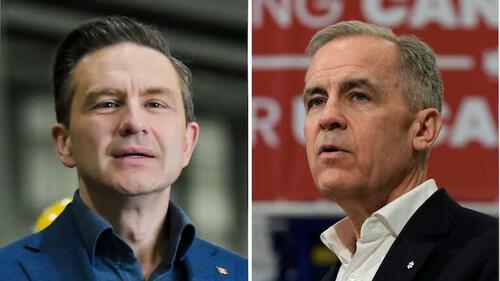 Conservative Leader Pierre Poilievre called Liberal Leader Mark Carney a 'grifter' on Tuesday, as the federal election campaign nears its halfway point. (Laura Proctor, Adrian Wyld/The Canadian Press)
Conservative Leader Pierre Poilievre called Liberal Leader Mark Carney a 'grifter' on Tuesday, as the federal election campaign nears its halfway point. (Laura Proctor, Adrian Wyld/The Canadian Press)
Then, after US President Donal Trump began threatening - and imposed, 25% tariffs on many goods from Canada, Carney's fortunes shifted and he called an early election.
Carney, a former governor of the Bank of Canada and Bank of England, declared that Canada's "old relationship with the United States, based on deepening integration of our economies and tight security and military cooperation, is over."
"President Trump is trying to break us so that America could own us," he told a crowd at a London, Ontario rally on Friday.
Poilievere, meanwhile, had positioned himself as the ultimate candidate for change - vowing to deregulate vast swaths of the Canadian economy, and cracking down on the "woke" liberal establishment.
By mid-March, when the election was called, Carney's liberals were polling neck and neck - and now maintain a narrow lead into the home stretch.
Carney has now positioned himself as the man most ready to counter Trump's tariffs - with his supporters pointing to his strong resume.
"I'm very impressed by the stability and the serious thought process of Mark Carney," Mike Brennan of Kitchener, Ontario told the BBC outside a Carney event at a Cambridge coffee shop, about an hour outside Toronto.
Brennan, a "lifelong Liberal," says he initially wasn't going to vote in the election over his hatred of Trudeau, however the departure of the former PM has reignited support for the Liberal party.
Stay tuned...
Psst... click here for a preview of our new partnership at ZH Store.
-
Site: AsiaNews.itIn Vietnamese churches, public memorial services are being held for the pontiff. On behalf of the communist authorities, a government official burnt incense in his memory at the headquarters of the Bishops' Conference. No cardinal from this lively and courageous Church will be at the conclave, but everyone remembers Francis's suggestion that his successor will certainly go to Vietnam.
-
Site: Catholic Herald
When Pope Francis gave the green light for the Dicastery for the Doctrine of the Faith to issue its controversial 2024 declaration Fiducia Supplicans, authorising the blessing of persons in same-sex unions, the aim was presumably to fill a pastoral void and reach out to a constituency often alienated from the Catholic Church.
Under the heading of unintended consequences, however, one clear outcome of the declaration was the emergence of a new papal candidate: 65-year-old Cardinal Fridolin Ambongo Besungu of Kinshasa in the Democratic Republic of Congo, who also serves as the elected leader of the African bishops as president of the Symposium of Episcopal Conferences of Africa and Madagascar (SECAM).
A headline at the time in the Italian newspaper Il Messaggero, atop a piece by veteran Vatican correspondent Franca Giansoldati, said it all: “The profile of Cardinal Ambongo advances among the future papabili: He led the African blockade of the blessing of gay couples.”
The reference was to the fact that Ambongo was the prime mover behind a statement from SECAM which declared Fiducia Supplicans a dead letter on the continent. African prelates, it said, “do not consider it appropriate for Africa to bless homosexual unions or same-sex couples because, in our context, this would cause confusion and would be in direct contradiction to the cultural ethos of African communities.”
It marked the first time that the bishops of an entire continent had said a Vatican edict would not be applied in their territory. Given how difficult it generally is to get an unwieldy body of bishops to agree on anything, the swift and unified response from SECAM was a testament to Ambongo’s leadership.
Moreover, the SECAM statement was also notable for the way it was developed in concert with the pope and his top advisers.
Ambongo recounted the story in a conversation with a French Catholic blog. After gathering responses from the African bishops, he flew to Rome to present them to the pope. Francis asked him to work with Argentine Cardinal Víctor Manuel Fernández of the Dicastery for the Doctrine of the Faith, which Ambongo did, consulting the pontiff throughout, so that when the SECAM statement was issued, it carried a de facto seal of papal approval.
In other words, Ambongo found a way for the Africans to have their cassava and eat it too – opposing the pope, at least indirectly, but without appearing disloyal. It is one of the most difficult needles to thread in Catholic life, and the skilful manner in which Ambongo achieved it drew attention.
Born in Boto, Congo, in 1960, Ambongo felt called to the priesthood and joined the Capuchin Franciscans, taking his final vows in 1987. He was later sent to study moral theology at the prestigious Alphonsian Academy in Rome, run by the Redemptorists, where he learned Italian – almost a sine qua non for a potential pope.
In the years that followed, he worked in a parish, taught in seminaries, and held various leadership roles within the Capuchins until he was appointed bishop in 2004 at the age of 44.
In 2016, Ambongo became Archbishop of Mbandaka-Bikoro and, like his mentor, the late Cardinal Laurent Monsengwo Pasinya, was soon drawn into the turbulence of Congolese politics. When then-President Joseph Kabila delayed elections in 2016 to remain in power, Ambongo became a leading figure in the pro-democracy opposition and helped negotiate the St Sylvester Framework Agreement, which paved the way for elections in 2018.
Ambongo certainly does not lack boldness. His outspoken environmental advocacy – criticising both multinational oil and mining companies and local politicians who serve their interests – has led to death threats; at one point, he described himself as “a person in danger in Congo.”
He clearly enjoyed the favour of Pope Francis, having been appointed to the pontiff’s Council of Cardinals in 2020, succeeding Monsengwo, and confirmed in that role in 2023. He also hosted a successful papal visit to Congo in 2023. Yet, as the Fiducia controversy demonstrated, he is also willing to dissent from the chorus of approval that typically surrounds any pope when he believes a matter of principle is at stake.
The case for Ambongo?
He embodies a distinctive blend of continuity and change with regard to the Pope Francis legacy – sustaining his outreach to the peripheries and his strong social witness, but adopting a more cautious and traditional stance on contentious doctrinal issues.
His résumé speaks of gravitas – a statesman in national politics, a continental leader of bishops, and a papal adviser with insider knowledge of Vatican reform.
Moreover, as a Capuchin, Ambongo has a reputation as a committed pastor, close to the people and attuned to the everyday struggles of the faithful. He appears to genuinely enjoy being among them – a desirable quality in a pope.
The case against?
Ambongo is not widely known outside Africa, so many cardinals’ impressions are likely shaped more by media reports and second-hand accounts than by personal acquaintance. Some may question whether his strong criticism of declining moral standards in the West could make him a difficult figure in more secularised regions, potentially appearing out of touch.
Americans might also be slightly uneasy about his limited English, although they accepted a similar situation with Francis.
One thing is certain: should Ambongo emerge from the conclave wearing white, the arrival of a “black pope” would electrify global opinion, granting him a vast cultural platform. The question would then be how he chooses to use it.
(Photo by HARDY BOPE/AFP via Getty Images)

The post Papabile of the day: Cardinal Ambongo’s blend of tradition and reform first appeared on Catholic Herald.
The post Papabile of the day: Cardinal Ambongo’s blend of tradition and reform appeared first on Catholic Herald.
-
Site: Zero HedgeInterpreting Trump's Reaction To The Pahalgam Terrorist AttackTyler Durden Sun, 04/27/2025 - 12:50
Authored by Andrew Korybko via substack,
India and Pakistan are back to the brink of war after last week’s Pahalgam terrorist attack, which saw allegedly Pakistani-affiliated terrorists massacre 26 Indian tourists in Kashmir who were targeted on the basis of their Hindu faith, thus prompting many to wonder about the US’ stance towards this crisis.
America’s position is important since it’s still the most significant country in the world and it’s nowadays in the process of “Pivoting (back) to Asia”.
Here’s what Trump said on Friday when he was asked about it:
“I am very close to India and I'm very close to Pakistan, as you know. And they've had that fight for 1,000 years in Kashmir. Kashmir has been going on for 1,000 years, probably longer than that. And it was a bad one yesterday, though, that was a bad one. Over 30 people.
There have been tensions on that border for 1,500 years. So, you know, the same as it's been, but they'll get it figured out one way or the other. I'm sure… I know both leaders. There is great tension between Pakistan and India. But there always has been.”
The first part of his response can be interpreted as signaling the US’ neutrality given its traditional strategic partnership with Pakistan and its comparatively newer one with India.
Pakistan has been a “Major Non-NATO Ally” since 2004 while India was designated as the US’ first “Major Defense Partner” in 2016. This state of affairs explains why Trump offered to mediate the Kashmir Conflict in July 2019 per what he claimed was Modi’s request, which India denied, and then reiterated his intent that September.
Accordingly, the first part of his response can be seen as a reaffirmation of this policy, which could lead to him once again offering to mediate. In that scenario, given the precedent of him seeking to formalize the status quo between Israel-Palestine via 2020’s proposed “deal of the century” and him reportedly attempting to replicate that between Russia-Ukraine, he’d be expected to propose the same between India and Pakistan. That would take the form of turning the Line of Control into the international border.
Moving along, his historical review of the Kashmir Conflict is grossly inaccurate since it stems from the partition of the erstwhile British Raj, not some over-millennium-long dispute.
Nevertheless, he might have wanted to convey that its religious dimension owes its origins to the Muslim invasion of hitherto almost entirely Hindu India centuries ago, to which end he embellished a lot like he’s known to do. This part of his response can therefore be interpreted as reminding everyone that this isn’t a new conflict.
The last part of his response suggests that he’s not interested in mediating at the moment though seeing as how he quipped that “they’ll get it figured out one way or the other.” That said, he’s not ruling out his personal involvement in this matter either since he also reminded everyone that “I know both leaders”, meaning Indian Prime Minister Narendra Modi and his Pakistani counterpart Shehbaz Sharif. He should thus already know that India rejects mediation, however, while Pakistan has always been open to it.
All told, Trump’s reaction to the Pahalgam terrorist attack can be interpreted as predictable condemnation of the killings and an unsurprising reaffirmation of American neutrality vis-à-vis India and Pakistan, which is intended to position the US to mediate if tensions worsen.
It doesn’t want to get involved for now and prefers for this latest crisis to resolve itself but isn’t discounting a diplomatic intervention if the scenario of tit-for-tat strikes quickly spirals out of control into a nuclear standoff.
-
Site: Zero HedgeMore People Buying Groceries With Buy Now Pay Later - Late Payments RisingTyler Durden Sun, 04/27/2025 - 12:15
In yet another sign of a cracking and creaking US economy, Americans are increasingly tapping Buy Now, Pay Later (BNPL) financing to pay for daily essentials -- even groceries -- according to a new survey released Friday by Lending Tree.
“A lot of people are struggling and looking for ways to extend their budget,” said Lending Tree chief consumer analyst Matt Schulz. “Inflation is still a problem. Interest rates are still really high. There’s a lot of uncertainty around tariffs and other economic issues, and it’s all going to add up to a lot of people looking for ways to extend their budget however they can.”
There are plenty of concerning findings in the survey. For starters, there's the rising share of BNPL users who are buying now and paying late -- 41% say they were tardy over the past year, which is up from 34% in last year's survey. About three-quarters of the late-payers say they were late by no more than "a week or so." However, where that and other numbers are concerned, it's important to note that these stats are based on survey responses -- not the hard data of their BNPL providers. Given human nature, it's reasonable to think respondents would understate subpar behavior.
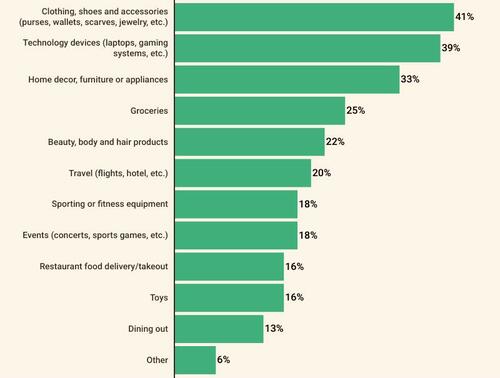 "Which of the following things have you ever purchased using BNPL?" (via LendingTree survey of 2,000 consumers conducted in April)
"Which of the following things have you ever purchased using BNPL?" (via LendingTree survey of 2,000 consumers conducted in April)
The top two categories of BNPL purchases are clothing, shoes and accessories (41% of BNPL users) followed by technology devices (39%). However, there's been a surge in people who've used BNPL for groceries -- 25% versus 14% last year. A whopping one-third of Gen Z BNPL-tappers say they've used the financing for groceries. Similarly, 16% of users have tapped BNPL for food delivery or takeout.
That finding comes on the heels of our March report on DoorDash signing a deal with BNPL-facilitator Klarna, to let cash-strapped consumers pay for restaurant food, groceries and other delivery orders in four equal, interest-free installments, or "at a more convenient time, such as a date that aligns with their paycheck schedules."
So then they securitized all the DoorDash loans and sliced them into tranches to sell off to the banks
— Max Gagliardi (@max_gagliardi) March 21, 2025
Rating agencies were slapping AAA on Chick-fil-A orders for credit scores under 500 who didn’t leave a tip pic.twitter.com/sa3YKIqLhwRegret is a common feeling among BNPL users: 48% say they've regretted using the service on at least one purchase, while 16% say they've felt that way multiples times. The emotion is most common among Gen Z: 64% have rued making a BNPL decision, and 24% felt that way about more than one purchase.
Timely payments on BNPL don't help your credit score, but 62% of users wrongly think they can bolster their scores by using the service and sticking to due dates. Looking forward, Lending Tree says "it's only a matter of time" until America's top two credit-scoring firms, FICO and VantageScore, factor BNPL performance into their calculations.
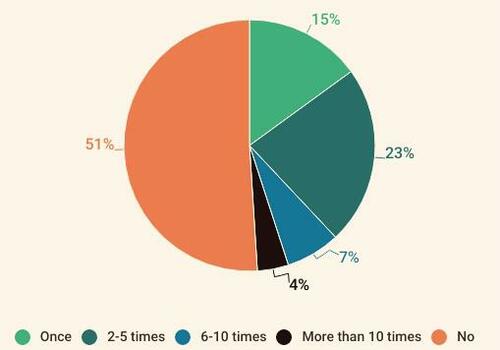 "Have you ever used a buy now, pay later service like Affirm or Klarna?" via LendingTree survey of 2,000 consumers conducted in April
"Have you ever used a buy now, pay later service like Affirm or Klarna?" via LendingTree survey of 2,000 consumers conducted in April
Other findings:
- Nearly half of the respondents have used a BNPL loan, with 11% saying they've used them 6 or more times. 23% have had three or more of them running simultaneously.
- 53% of men have used BNPL, versus 46% of female respondents.
- 64% of Gen Zers (age 18 to 28) have used BNPL, compared to 29% of Boomers (61 to 79)
You can add the Lending Tree survey to the tall stack of evidence we recently shared, making the case that the US consumer is melting down.
Psst... click here for a preview of our new partnership at ZH Store.
-
Site: Catholic Herald
Italian Cardinal Pietro Parolin on Sunday said the overwhelming love for Pope Francis must not be a flash of momentary emotion, but that his legacy should be welcomed and lived in the Church and the world.
Speaking during an April 27 Mass in St Peter’s Square, Parolin noted that it was Divine Mercy Sunday, and that mercy had been a central guiding principle throughout Francis’s papacy.
“It is important to welcome as a precious treasure this principle on which Pope Francis insisted so much,” he said.
“Our affection for him, which is being manifested at this time, must not remain a mere emotion of the moment; we must welcome his legacy and make it part of our lives, opening ourselves to God’s mercy and also being merciful to one another,” he said.
The Vatican’s Secretary of State for the entirety of Francis’s papacy, Parolin celebrated Mass on the second of the novemdiales, or nine days of mourning, following the pope’s death last week. The Mass also coincided with the Jubilee for Teenagers and Divine Mercy Sunday.
“It is precisely the Father’s mercy, which is greater than our limitations and calculations, that characterised the Magisterium of Pope Francis and his intense apostolic activity,” Parolin said, adding that the desire to share God’s mercy with everyone “was the principal theme of his pontificate.”
Pope Francis, he said, reminded believers that mercy “is the very name of God, and therefore no one can put a limit on his merciful love with which he wants to raise us up and make us new people.”
“Mercy takes us back to the heart of faith. It reminds us that we do not have to interpret our relationship with God and our being Church according to human or worldly categories,” he said.
The Gospel message is primarily the discovery of being loved by God, regardless of one’s merits, he said, adding that it is also a reminder that “our life is woven with mercy.”
“We can only get back up after our falls and look to the future if we have someone who loves us without limits and forgives us,” he said, urging Christians to let go of calculations and selfishness in their relationships, and to enter into dialogue with others in a spirit of mercy and forgiveness.
“Only mercy heals and creates a new world, putting out the fires of distrust, hatred and violence: this is the great teaching of Pope Francis,” he said.
Pope Francis died on Monday, April 21, at the age of 88, after struggling with a severe respiratory illness that had landed him in hospital for 38 days earlier this year.
He was discharged on March 23, and appeared to disregard doctors’ orders to rest, making several public appearances, including his final Easter Urbi et Orbi blessing and a surprise outing in the popemobile to greet the faithful who had gathered for the event.
Francis’s funeral was held on Saturday, April 27, in St Peter’s Square, and he was buried later that day in the Basilica of Saint Mary Major, his favourite Roman basilica, which he visited often and which is home to the famed icon Maria Salus Populi Romani, or Mary, Health of the Roman People.
His funeral began a nine-day period of mourning in the Catholic Church, referred to as the novemdiales, during which Masses are celebrated for the deceased pontiff and pre-conclave meetings of cardinals, called general congregations, are held to discuss the state of the Church and the world ahead of the election of the Church’s new universal pastor.
Parolin has emerged as a frontrunner papabile, or likely candidate, in the lead-up to the conclave.
His insistence that Francis’s legacy must not be forgotten or reduced to a momentary show of emotion will certainly draw attention from his fellow cardinals, and his extensive experience in diplomacy and gentle demeanour will aid his chances. However, significant questions remain about his record on finances and the future of economic and institutional reform under his leadership.
The general consensus among observers is that, while maintaining and carrying forward the spirit of Pope Francis’s pastoral and geopolitical agenda, Parolin is essentially a creature of the institution and would therefore represent a step backward in many other key areas of priority for Francis.
Parolin’s novemdiales Mass on Sunday coincided with the Jubilee for Teenagers, during which the canonisation of Blessed Carlo Acutis had been expected to take place; however, this has been postponed until after the election of a new pope.
In his homily, Parolin said that the sadness at Pope Francis’s death and his absence from the celebration is accompanied by the joy of the Resurrection and by “the joy of the Gospel” that Francis had so greatly prioritised.
“The joy of Easter, which sustains us in this time of trial and sadness, is something that can almost be touched in this square today,” he said.
Referring to the feast of Divine Mercy, he called Pope Francis “a shining witness of a Church that bends down with tenderness towards those who are wounded and heals with the balm of mercy.”
Pope Francis, he said, reminded the Church and the world “that there can be no peace without the recognition of the other, without attention to those who are weaker and, above all, there can never be peace if we do not learn to forgive one another, showing each other the same mercy that God shows us.”
Divine Mercy Sunday is a time to remember Pope Francis, he said, addressing the roughly 200,000 people present: “To you, to all of us, to the whole world, Pope Francis extends his embrace from Heaven.”
(Photo by Adam Berry/Getty Images)
The post Parolin at Novemdiales: mercy Is Pope Francis’s enduring legacy first appeared on Catholic Herald.
The post Parolin at Novemdiales: mercy Is Pope Francis’s enduring legacy appeared first on Catholic Herald.
-
Site: Zero HedgeTexas Governor Signs 'Texas DOGE' Into Law To Cut Regulations, Boost Government EfficiencyTyler Durden Sun, 04/27/2025 - 11:40
Authored by Chase Smith via The Epoch Times (emphasis ours),
Texas Gov. Greg Abbott signed into law on April 23 a sweeping regulatory reform measure known as the Regulatory Reform and Efficiency Act, aimed at streamlining government processes and reducing the regulatory burden on businesses and residents.
 Texas Gov. Greg Abbott signs the newly introduced Senate Bill 14 in the State Capitol in Austin on April 23, 2025. Brandon Bell/Getty Images
Texas Gov. Greg Abbott signs the newly introduced Senate Bill 14 in the State Capitol in Austin on April 23, 2025. Brandon Bell/Getty Images
Senate Bill 14 creates the Texas Regulatory Efficiency Office within the Office of the Governor and has been characterized as the Texas version of the federal Department of Government Efficiency (DOGE) created by President Donald Trump and led by businessman Elon Musk.
The new office is tasked with identifying outdated or duplicative rules, assisting state agencies in simplifying regulatory procedures, and establishing public access to rulemaking processes through a centralized online portal.
“We are putting at the forefront of legislation the shaping, formation, and recalibration of government in the State of Texas to make it more responsive and more efficient,” Abbott said in a statement. “We in Texas will now have our own DOGE, known as the Texas Regulatory Efficiency Office. This law will slash regulations, put stricter standards on new regulations that could be costly to businesses, and put a check on the growth of the administrative state.”
The governor added that the office would make the government more efficient and less costly and that the state would operate “at the speed of business.”
The bill also establishes a Texas Regulatory Efficiency Advisory Panel composed of members of the business community, academia, and regulatory law to support the office’s mission. The new office will produce regulatory analysis manuals and reduction guides, and coordinate with other state entities to improve transparency and consistency.
Abbott said the measure is important for the state’s economic health and limiting regulations.
“Texas has won the national championship for economic development for 13 years in a row—business could not be doing better,” Abbott said in remarks while signing the bill. “With one exception. Among the CEOs that I talked to every single week, there were growing concerns that were repeated time and again. The regulatory environment in Texas is getting too burdensome.”
Abbott added that although Texas is generally known as business-friendly when it comes to regulations, the regulatory environment was “not as easy to navigate as it once was.” He cited a 2024 study that showed Texas had the fifth-highest regulatory burden of any state.
Critics of the bill questioned why it was necessary, as there is already a state Sunset Advisory Commission. According to its website, the mission of that agency is “to enhance government accountability to the Legislature and people of Texas by objectively evaluating the need for and value of state programs and services.”
Republican state Rep. Brian Harrison, who voted against the bill, said in a post on X after the governor signed the bill that it “grows government, increases spending, expands bureaucracy, gives more power to the executive branch, protects the Chevron deference, and makes Texas courts more liberal than federal courts.”
In a speech on the House floor earlier in the session, Harrison said: “The point of DOGE is to cut government, reduce spending, and shrink the bureaucracy. Unfortunately, this bill does the exact opposite.”
Republican Lt. Gov. Dan Patrick dubbed the measure “DOGE Texas-style,” and said it is about cutting red tape and saving taxpayer dollars.
“Texas DOGE will ensure the Texas Miracle continues long into the 21st century,” Patrick said in a statement. “Texans understand that by cutting red tape, more money stays in the pocket of taxpayers. Our conservative approach to regulation will keep Texans prosperous and our state the best place to do business in America and across the globe.”
Speaker of the Texas House Dustin Burrows, also a Republican, called the law a win for transparency and government accountability.
“A major theme of this session is government efficiency, and today the state is delivering on its promise to cut red tape and empower Texans with greater oversight of their government,” Burrows said in the statement. “As the first bill signed by Governor Abbott into law this session, the Regulatory Reform and Efficiency Act brings our state into the 21st century in terms of government rulemaking and will strengthen economic opportunity.”
The law includes provisions for a biennial report from the office to state leadership and a mandate for rulemaking procedures to be written in plain language. It also removes judicial deference to agency interpretations of law in many court cases, allowing judges to review agency rulemaking.
Jeff Burdett, state director for the National Federation of Independent Business, called the bill “a historic step for Texas small businesses.” Glenn Hamer, president and CEO of the Texas Association of Business, said the law follows key recommendations from the Governor’s Small Business Freedom Council and called it “a model for the nation.”
-
Site: Zero HedgeSome 150 Drones Target Ukraine As Trump Doubts Putin On Peace: "Just Tapping Me Along"Tyler Durden Sun, 04/27/2025 - 11:05
Overnight into Sunday Russia launched a massive wave of drones on Ukraine, which targeted several regions, resulting in at least one person killed and a 14-year-old girl wounded in the city of Pavlohrad in the Dnipropetrovsk region
Another person was wounded in the Odessa region, and in all there were around 150 drones sent, with Ukraine's air force saying it was able to intercept or electronically jam 67 of them.
 Illustrative file image
Illustrative file image
Given that such drone and missile attacks have remained frequent, even as there's a US-led effort to get peace talks off the ground, Ukraine's military has been trying to target drone manufacturing hubs inside Russia with its own strikes
On Wednesday the General Staff of Ukraine's Armed Forces said that "a strike had successfully hit a drone manufacturing facility in the Yelabuga district of Russia's Republic of Tatarstan, located some 655 miles from Ukraine's border."
"The armed forces said Ukraine's Unmanned Systems Forces struck the facility, which produces about 300 different combat drones per day, including Iranian-designed Shahed drones, and the Russian-made versions, known as Geran uncrewed aerial vehicles (UAVs)," Newsweek reported.
Trump on Friday said Ukraine and Russia were "very close to a deal" but has also of late expressed skepticism over Moscow's willingness, and has warned that the Russian side better not drag its feet to buy more time to advance on the battlefield.
"There was no reason for Putin to be shooting missiles into civilian areas, cities and towns, over the last few days," Trump wrote in a social media post after attending the funeral for Pope Francis.
Trump and Zelensky had an impromptu face-to-face meeting inside St. Peter's Basilica on the sidelines of the funeral. The NY Times suggests that Zelensky was able to make progress in winning Trump over:
President Trump’s standing among Ukrainians is practically on life support. But many cheered one statement he made on Saturday after meeting with President Volodymyr Zelensky, questioning why President Vladimir V. Putin of Russia would continue to pummel Ukraine as the United States is trying to broker peace talks.
“It makes me think that maybe he doesn’t want to stop the war, he’s just tapping me along,” Mr. Trump wrote on Truth Social after meeting with Mr. Zelensky on the sidelines of Pope Francis’ funeral, adding that Mr. Putin may need to be “dealt with differently” — with more sanctions.
The Ukrainian side is hoping this has restored positive relations between the two leaders, given it was their first meeting since the blowup and damaging encounter in the Oval Office on Feb.28.
Trump on Truth Social: It makes me think that maybe he doesn't want to stop the war, he's just tapping me along, and has to be dealth with differently, through "Banking" or "Secondary Sanctions?" Too many people are dying!!!
Had anyone heard the expression "tapping me along" before Trump started to use it to express his frustration and impatience with Iran and Russia? https://t.co/wklP6953m7
— Michael Tracey (@mtracey) April 26, 2025"Even such a small thing as Mr. Trump’s short meeting with Mr. Zelensky felt like a major change," NY Times continued. "Since taking office, the Trump administration has at times appeared almost solicitous of Mr. Putin, a sharp reversal in U.S. policy. And Mr. Trump has made no secret of his dislike for the Ukrainian leader."
-
Site: Zero HedgeSpock And The Logic-Based Approach To VolatilityTyler Durden Sun, 04/27/2025 - 10:30
Authored by Lance Roberts via RealInvestmentAdvice.com,
Market Finds Some Hope
Last week, we discussed the issue with the spat between President Trump and the Federal Reserve chairman, Jerome Powell. As noted then:
“While the markets await the next Federal Reserve meeting, the uncertainty over monetary policy weighs on markets as much as the uncertainty about tariffs. This past week, the market reversed some of its gains from the massive “tariff reprieve” surge. With the MACD back on a buy signal and money flows turning positive, buyers are tepidly stepping back into the market. The 20-DMA continues to act as overhead resistance, defining the current downtrend. While there is undoubtedly a risk of another test of recent lows, which should be expected and why caution remains advisable, a break above the 20-DMA would lead to a rally to the 50-DMA. (Monday’s article addressed the “Death Cross” and what it means for investors.)“
The market rallied above the 20-DMA this past week as investors found some “silver linings” to the ongoing tariff dispute. Despite China saying “no negotiations” had started with the U.S., comments from both President Trump and Scott Bessent suggested that the Administration would “be nice” to China and that a “very good deal” could be done between the two countries. As we have noted previously, given the more extreme oversold condition of the market, any “good news” would allow investors to push stocks higher.
As stated, the market cleared initial resistance at the 20-DMA, but there is a heavy band of resistance just ahead at the level where the market was trying to bottom ahead of the tariff announcements. Just above that is the confluence of the 50- and 200-DMAs. While markets are not overbought yet, sellers will likely re-emerge if the market pushes further into those resistance levels. As we have suggested over the last two weeks, we are likely in for a rather protracted consolidation action as the market digests ongoing trade negotiations, slower economic growth, and reduced earnings expectations. Therefore, we should expect continued pullbacks and rallies until the market resolves the seller imbalances.
What is very interesting about the recent market decline is that while professional and “older investors,” who are presumably more experienced, are very “bearish” about their investment outlook, retail investors have been “buying the dip” at the most on record going back to early 2023.
However, while you may shake your head in disbelief, buying markets when they are down has been an essentially winning strategy for dip buyers over the last decade. Of course, such should be unsurprising given repeated rounds of monetary and fiscal interventions. As previously discussed, the Fed has engendered an entire generation of young investors with a sense of “moral hazard.” To wit:
“From a market perspective, the liquidity flows from the Federal Reserve increased speculative appetites and investors piled into “zombies” with reckless abandon. Why? Because of a lack of incentive to guard against risk as investors believe the Fed is protecting them from the consequences of risk. In other words, the Fed has “insured them” against potential losses.”
Will this time be different? Maybe. There will be a point where taking on excessive speculative risk in leveraged ETFs and options leads to poor outcomes. However, that may not be today. As such, we need to be mindful that buyers and sellers drive markets. Until the markets change investors’ speculative attitudes, we will likely continue to find support in markets even though we may think there shouldn’t be.
Such is the message of today’s discussion: learning to be “unemotional” when managing our money.
Spock And The Vulcan Approach To Investing
In “Is Risk Off Positioning Signaling A Market Low,” we discussed the extremely oversold market conditions that are beginning to suggest the market may be approaching a near-term low. That analysis was based on various indicators, including extremely negative investor sentiment, positioning, and technical oversold conditions. As we stated, the current market environment is much like 2022. The first chart below shows the 2022 market correction versus 2025. The rally that began this past week could certainly rally further. Still, as we have warned, any rally in the near term will likely be met with sellers until there is a resolution on tariffs, monetary policy, and more certainty around recession risks.
The following chart compares our weekly Technical Composite Index. You will note that the market bounced or bottomed when the technical composite reached below 20.
The current conundrum is whether the extremely low technical readings preceding this week’s rally were a technical bounce or a market bottom. Unfortunately, we won’t know until after the fact. Still, our gut instinct suggests that given the depth of the decline and the technical damage to the market overall, any significant bounce will be met with sellers. Historically, the first market low during a correction phase is not usually a bottom. Regardless, the market continues to follow the 2022 playbook closely this year, but I would not expect the rest of the year to be an exact match.
The optimistic view is that while there are never any guarantees when it comes to investing, history suggests that after such a volatile period, we tend to perform better in the future, barring the onset of a recession or credit-related event. The bad news is that these increases in volatility tend to lead investors to make many emotionally driven investment mistakes. We rationalize, try to avoid losses, fail to take action when needed, or take action when we shouldn’t—all driven by our emotions. Yet being unemotional about your money is crucial to long-term investment outcomes.
As Howard Marks once stated:
“If I ask you what’s the risk in investing, you would answer the risk of losing money. But there actually are two risks in investing: One is to lose money, and the other is to miss an opportunity.
You can eliminate either one, but you can’t eliminate both at the same time.
So the question is how you’re going to position yourself versus these two risks: straight down the middle, more aggressive or more defensive.
I think of it like a comedy movie where a guy is considering some activity. On his right shoulder is sitting an angel in a white robe. He says: ‘No, don’t do it! It’s not prudent, it’s not a good idea, it’s not proper and you’ll get in trouble’.
On the other shoulder is the devil in a red robe with his pitchfork. He whispers: ‘Do it, you’ll get rich’. In the end, the devil usually wins.
Caution, maturity and doing the right thing are old-fashioned ideas. And when they do battle against the desire to get rich, other than in panic times the desire to get rich usually wins. That’s why bubbles are created and frauds like Bernie Madoff get money.
How do you avoid getting trapped by the devil?
I’ve been in this business for over forty-five years now, so I’ve had a lot of experience. In addition, I am not a very emotional person. In fact, almost all the great investors I know are unemotional. If you’re emotional then you’ll buy at the top when everybody is euphoric and prices are high. Also, you’ll sell at the bottom when everybody is depressed and prices are low. You’ll be like everybody else and you will always do the wrong thing at the extremes.
Therefore, unemotionalism is one of the most important criteria for being a successful investor. And if you can’t be unemotional you should not invest your own money, period. Most great investors practice something called contrarianism. It consists of doing the right thing at the extremes which is the contrary of what everybody else is doing. So unemtionalism is one of the basic requirements for contrarianism.”
If you didn’t read that quote carefully, I would reread it.
During periods of market volatility, investors often let emotions drive decisions. However, the investors who perform best under pressure tend to think less like adrenaline-fueled traders and more like Spock from Star Trek. Emotionless, logical, and consistent, Spock’s mindset offers guidance for navigating turbulent markets. As he once said, “Insufficient facts always invite danger.” That mindset is exactly what investors need when fear or greed threaten sound decision-making. Here are some points to consider.
Emotion Is The Enemy of Reason
Market volatility heightens stress, which in turn amplifies emotional responses. As a result, investors often chase rallies or panic-sell during drawdowns. Spock’s detachment offers a counterpoint.
“When you eliminate the impossible, whatever remains, however improbable, must be the truth.”
Investing means cutting through noise, avoiding speculation, and relying on data. For example, the media is jammed with emotionally charged headlines about tariff-induced trade wars, recessions, and de-dollarization. In reality, those events rarely occur. As we discussed in “Probabilities vs Possibilities:”
“The chart below is a normally distributed “bell curve” of potential events and outcomes. In simple terms, 68.26% of the time, typical outcomes occur. Economically speaking, such would be a normal recession or the avoidance of a recession. 95.44% of the time, we are most likely dealing with a range of outcomes between a reasonably deep recession and standard economic growth rates. However, there is a 2.14% chance that we could see another economic crisis like the 2008 Financial Crisis. But what about “economic armageddon?” That event where nothing matters but “gold, beanie weenies, and bunker.” That is a 0.14% possibility.”
This concept of possibilities versus possibilities is crucial to navigating investment outcomes. Spock never claimed to predict the future. Instead, he calculated the probabilities of potential outcomes. That approach mirrors sound portfolio management. Rather than trying to guess what markets will do tomorrow, successful investors assess various outcomes and plan accordingly. As Spock once stated
“Change is the essential process of all existence.”
In other words, if your current reaction to recent market volatility is to expect it to continue indefinitely, you will likely be disappointed. This is why we continually suggest managing risk, rebalancing, taking profits, and focusing on allocations. Building portfolios that account for downside risks, multiple economic scenarios, and margin of safety allows investors to remain calm when markets shift. The only thing investors need to fear is fear itself.
Emotional decisions typically underperform disciplined ones. Investors can’t eliminate volatility, but can control their reactions to it. Behavioral finance confirms this. Loss aversion, herd behavior, and recency bias drive many of the worst investment decisions.
Discipline Outperforms Reactivity
Reacting emotionally to short-term moves often destroys long-term returns. Spock’s strength was never his speed, but his steadiness.
“Logic is the beginning of wisdom, not the end.”
The ability to step back, re-evaluate with clarity, and follow a predetermined investment process keeps portfolios aligned with goals. Legendary investor Charlie Munger confirmed this view when he stated:
“The big money is not in the buying and selling, but in the waiting.”
Patience is a strategic advantage. During volatile markets, as we have currently, it is crucial to step back and focus on the broad performance of the portfolio relative to your goals. A disciplined approach before volatility sets in is the key to navigating outcomes. Spock’s analytical mindset lends itself to rigorous risk assessment. He didn’t avoid danger; he quantified and prepared for it. Likewise, investors must separate perceived risk from actual risk. Volatility may feel like danger, but it is often simply price movement around a trend. Actual risk lies in permanent capital loss, overconcentration, or misalignment with one’s time horizon and objectives.
As we discussed previously, volatility begets volatility. Periods of low volatility always lead to high volatility, like now. However, the opposite is also true. The trick is navigating the periods of high volatility well enough to participate in the extended periods of low volatility.
Ray Dalio, founder of Bridgewater Associates, advocates for a similar analytical approach to risk:
“If you’re not worried, you need to worry. And if you’re worried, you don’t need to worry.”
In other words, constant vigilance and preparation are more productive than panic. Investing during periods of uncertainty can be dangerous; however, there are some steps to take when investing in uncertain markets.
- Have excess emergency savings, so you are not “forced” to sell during a market decline to meet obligations.
- Extend your time horizon to 5-7 years, as short-term stresses can take time to resolve.
- Don’t obsessively check your portfolio.
- Consider tax-loss harvesting (selling stocks at a loss) to offset those losses against future gains.
- Stick to your investing discipline regardless of what happens.
Spock would agree.
Emotions Cloud Opportunity Recognition
Lastly, one overlooked cost of emotional investing is the inability to recognize opportunity during downturns. As Spock once said:
“Fear is the enemy. It is the great destroyer of logic.”
One mistake that investors make when volatility strikes is to assume that since the market is going down, EVERYTHING is going down simultaneously. That is rarely the case.
“The first law of thermodynamics states that, when energy passes into or out of a system (as work, heat, or matter), the system’s internal energy changes in accordance with the law of conservation of energy. This also results in the observation that, in an externally isolated system, even with internal changes, the sum of all forms of energy must remain constant, as energy cannot be created or destroyed.”
In the financial markets, money is not created or destroyed; it merely changes form. As the old Wall Street adage states, “There is always a bull market somewhere.” In other words, as capital is extracted from one asset, that capital is reinvested into another asset. Eventually, that same flow of capital will reverse, and the asset that rose previously will become a source of liquidity to return to what was sold off. A good recent example of this is Gold versus the S&P 500 index. As shown, there is a very high negative correlation between the 36-month rate of change of the two assets. Simply put, when one rises, it becomes a source of liquidity for the falling asset.
This doesn’t mean that one asset is good or the other is bad, it just means that money is changing form.
Crucially, when volatility strikes, prices disconnect from fundamentals. Investors with emotional discipline can identify undervalued assets while others flee. Such is why the best buying opportunities occur during maximum pessimism, but few are brave or logical enough to act. As Warren Buffett put it plainly:
“Be fearful when others are greedy, and greedy when others are fearful.”
That kind of contrarian thinking requires emotional restraint. Spock would likely view investor sentiment as a signal to be observed and discounted, not followed.
Conclusion: Adopt A Vulcan Framework
As an investor, you can take a page from Spock’s playbook and approach volatility not as a crisis but as a condition. Here are some basic steps:
- Rely on process, not prediction;
- Focus on probabilities, not possibilities.
- Discount possibilities that fall well outside historical norms.
- Question assumptions, most importantly your own.
- Suppress reactive behavior,
- Manage risk with calm precision.
In short, do what great investors have always done: stick to a disciplined, rational approach while others lose their heads.
I realize that you are not a Vulcan and are not afforded the luxury of being raised to be devoid of emotions. Fortunately, you don’t need to be Vulcan to benefit from the mindset. But you do need to recognize that emotions, while natural, often do more harm than good in investing. So while the market has declined this year, and headlines are screaming panic, remember Spock’s most crucial wisdom:
“Live long and prosper.”
That’s the goal, after all.
-
Site: Steyn OnlineIn case you missed it, here's how the last seven days looked at SteynOnline...
-
Site: Steyn OnlineTomorrow, in the first of several elections across His Majesty's dominions this coming week, Canadians go to the polls to decide between a government led by a central banker of no fixed abode or a viral apple-muncher. Incredibly, fortysomething per cent
-
Site: ChurchPOP
Pope Francis passed away on April 21, 2025, at 7:35 a.m. local time. He was 88 years old. Catholics worldwide mourn this great loss for the Church.
He was laid to rest on Saturday, April 25, 2025. Given this important time in the Church, we thought it would be fitting to share with you several videos from the papacy and death of Pope Francis.
1) Pope Francis Kisses Baby with 3M syndrome
2) Pope Francis' Last Urbi et Orbi Blessing on Easter Sunday
3) Pope Francis Meets Vice President JD Vance on Easter
4) Pope Francis' Visit to Saint Peter's Basilica Before Easter Vigil 2025
5) Pope Francis' First and Last Ride in the Popemobile
6) Pope Francis' Last Public Appearance
7) Cardinal Kevin Farrell Officially Announces the Death of Pope Francis
8) The First Images of Pope Francis' Body are Released after his Death
9) Pope Francis' Remains are Transferred to Saint Peter’s Basilica
10) Pope Francis' Funeral in One Minute
Click here if you you cannot see the post above.
Eternal Rest Prayer for Pope Francis
Eternal rest grant unto Pope Francis, O Lord, and let perpetual light shine upon him. May his soul and the souls of the faithful departed, through the mercy of God, rest in peace. Amen. -
Site: ChurchPOP
Pope Francis passed away on April 21, 2025, at 7:35 a.m. local time. He was 88 years old. Catholics worldwide mourn this great loss for the Church.
He was laid to rest on Saturday, April 25, 2025. Given this important time in the Church, we thought it would be fitting to share with you several videos from the papacy and death of Pope Francis.
1) Pope Francis Kisses Baby with 3M syndrome
2) Pope Francis' Last Urbi et Orbi Blessing on Easter Sunday
3) Pope Francis Meets Vice President JD Vance on Easter
4) Pope Francis' Visit to Saint Peter's Basilica Before Easter Vigil 2025
5) Pope Francis' First and Last Ride in the Popemobile
6) Pope Francis' Last Public Appearance
7) Cardinal Kevin Farrell Officially Announces the Death of Pope Francis
8) The First Images of Pope Francis' Body are Released after his Death
9) Pope Francis' Remains are Transferred to Saint Peter’s Basilica
10) Pope Francis' Funeral in One Minute
Click here if you you cannot see the post above.
Eternal Rest Prayer for Pope Francis
Eternal rest grant unto Pope Francis, O Lord, and let perpetual light shine upon him. May his soul and the souls of the faithful departed, through the mercy of God, rest in peace. Amen. -
Site: Rorate CaeliIn our church of Saint Francis de Sales in southern Maryland we have erected a catafalque in memory of His Holiness Pope Francis.The catafalque, derived from the Italian word catafalco, literally means a scaffold or elevation, but in its strictly liturgical sense the word is employed to designate the cenotaph-like structure which is used at the exequial offices of the Church and takes the place Father Kevin M Cusick http://www.blogger.com/profile/04460394747724581336noreply@blogger.com
-
Site: Fr. Z's BlogToday is the last podcast for this Lenten and Easter Cycle. Perhaps we will meet again at Pentecost. The final Roman Station is San Pancrazio in the Janiculum Hill. Scott Hahn gives us a helpful view of the Church which … Read More →
-
Site: Fr. Z's BlogToday the sun rose at 06:10 and it will set at 20:07 and the Ave Maria Bell is still in the 20:25 and it is Low Sunday and the Station is San Pancrazio and the Feast day of of St. … Read More →
-
Site: Zero HedgeWhat To Know About The UK Supreme Court's Ruling On Sex, GenderTyler Durden Sun, 04/27/2025 - 08:10
Authored by Guy Birchall via The Epoch Times (emphasis ours),
Britain’s highest court has ruled that the words “woman” and “sex” refer to “a biological woman and biological sex,” in a landmark decision that follows years of confusion, anger, and campaigning.
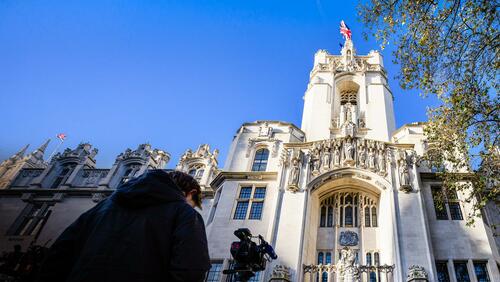 Protesters gather outside the Supreme Court in London on Nov. 15, 2023. On April 15, Britain’s highest court ruled that the words "woman" and "sex" refer to "a biological woman and biological sex" in a landmark case. Leon Neal/Getty Images
Protesters gather outside the Supreme Court in London on Nov. 15, 2023. On April 15, Britain’s highest court ruled that the words "woman" and "sex" refer to "a biological woman and biological sex" in a landmark case. Leon Neal/Getty Images
The case sought to clarify the question of whether a person who holds an official certificate recognizing their gender as female is entitled to the same women’s rights protections under the law.
A commonly cited example was the question of whether women-only services—such as a rape crisis support group—were allowed to exclude men with a gender recognition certificate.
A gender recognition certificate means that a person’s chosen gender identity is legally recognized.
Obtaining the certificate requires a medical diagnosis of gender dysphoria, having lived as the identified gender for at least two years, and the intention to live as that self-identified gender until death.
More than 8,000 gender recognition certificates have been granted in the United Kingdom since their introduction under the Gender Recognition Act of 2005.
1. How Case Was Sparked
The case was instigated by campaign group For Women Scotland in 2022, who brought a series of legal challenges, beginning in Scotland and culminating in the UK Supreme Court, over the definition of the word “woman” in the Gender Representation on Public Boards (Scotland) Act 2018.
This legislation was passed by the Scottish Parliament and mandated that 50 percent of individuals on public boards be female, including in its definition males who identify as women.
Lawyers for For Women Scotland argued that not tying the definition of sex to its “ordinary meaning” could have far-reaching consequences for sex-based rights, as well as “everyday single-sex services” such as bathrooms, changing rooms, hospital wards, and domestic violence and rape crisis centers.
Counsel for the Scottish government argued at the Supreme Court hearing in November 2024 that a person with a gender recognition certificate is “recognized in law” as having changed sex.
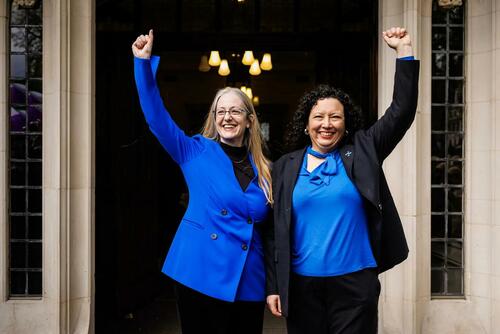 Celebrations outside the Supreme Court in London on April 16, 2025. The court ruled unanimously that “the terms woman and sex in the Equality Act 2010 refer to a biological woman and biological sex.” The decision allows men who identify as women, even with a gender recognition certificate, to be excluded from single-sex spaces. Dan Kitwood/Getty Images
Celebrations outside the Supreme Court in London on April 16, 2025. The court ruled unanimously that “the terms woman and sex in the Equality Act 2010 refer to a biological woman and biological sex.” The decision allows men who identify as women, even with a gender recognition certificate, to be excluded from single-sex spaces. Dan Kitwood/Getty Images
2. The Ruling
On April 15, the Supreme Court ruled that sex is rooted in biology, not whether a person has chosen to identify as a certain gender.
Delivering the judgment, Lord Patrick Hodge, deputy president of the UK Supreme Court, said the central question is how the words “woman” and “sex” are defined in the Equality Act of 2010.
“The terms woman and sex in the Equality Act 2010 refer to a biological woman and biological sex,” Hodge said.
This means that men who identify as women and who hold a gender recognition certificate may be excluded from single-sex spaces if “proportionate.”
The judges said that while the word “biological” does not appear in the definition of man or woman in the Equality Act, “the ordinary meaning of those plain and unambiguous words corresponds with the biological characteristics that make an individual a man or a woman.”
The decision stated that if the word “sex” did not mean biological sex in the 2010 legislation, providers of single-sex spaces—including changing rooms, homeless hostels, and medical services—would face “practical difficulties” and any other interpretation would render rules against discrimination on grounds of sexual orientation meaningless.
The court said that this interpretation of the law does not disadvantage people who identify as transgender, who were described as a “potentially vulnerable group.”
They said the group is still protected from discrimination, and “would be able to invoke the provisions on direct discrimination and harassment, and indirect discrimination” if needed.
The justices also said that transgender-identifying people are protected from discrimination on the grounds of gender reassignment.
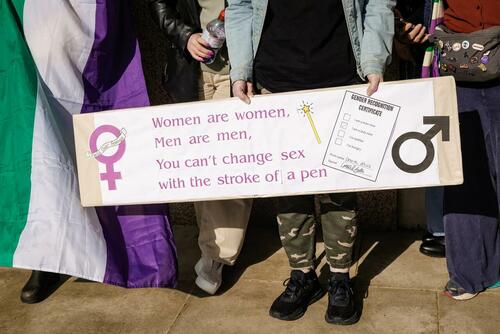 Campaigners who described themselves as women's rights activists stand next to the suffrage activist Dame Millicent Fawcett in Parliament Square in London on April 16, 2025. The Supreme Court ruled that sex is rooted in biology, not whether a person has chosen to identify as the opposite gender. Dan Kitwood/Getty Images
Campaigners who described themselves as women's rights activists stand next to the suffrage activist Dame Millicent Fawcett in Parliament Square in London on April 16, 2025. The Supreme Court ruled that sex is rooted in biology, not whether a person has chosen to identify as the opposite gender. Dan Kitwood/Getty Images
3. Lawmakers Could Overturn Court
The Supreme Court of the United Kingdom is the final court of appeal for all civil cases in the UK and of all criminal cases originating in England, Wales, and Northern Ireland.
It also covers a limited number of criminal cases from Scotland, which technically has a separate legal system.
However, a Supreme Court judgment in the UK carries a lot less weight than it would in the United States.
Lawmakers in the UK are not bound by a codified constitution that can only be changed through a super majority and other hurdles to ratification.
Rather, parliament can effectively negate a supreme court ruling by voting in new legislation.
So a simple majority vote by lawmakers is all that would be required to repeal that legislation and pass a new law that requires males who identify as women to be treated exactly the same as women.
4. Unanswered Questions
Since the decision, many public bodies and institutions have updated their rules, while others are still waiting for clarity.
The Equality and Human Rights Commission, which has responsibility for the promotion and enforcement of equality and non-discrimination laws in Britain, is expected to put an updated statutory code of practice before Parliament by the summer, and said it is working “at pace to incorporate the implications of this judgment” into the code for public bodies setting out their duties under the Equality Act.
This means that, currently, despite the Supreme Court ruling, the situation is far from clear.
5. Police Strip Searches
The British Transport Police became the first public body to take action when it changed its strip search policy a day after the judgment, saying that it had adopted a new “interim position” that will see transgender-identifying people in custody strip searched by an officer in line with their biological sex.
This means males in custody will be searched by male officers, while male officers who identify as trans women will no longer be able to search female detainees.
The National Police Chiefs’ Council has said it will be reviewing its policies, but “will need time to consider the full implications of the court’s decision, as will many other public bodies.”
Read the rest here...
-
Site: AsiaNews.itThe College of Cardinals Francis created reflects the world more than the Catholic Church, or rather, it reflects her missionary vocation. Numbers count far less than bearing evangelical witness, which Christians are expected to live in the community of nations. For this reason, starting tomorrow we will present the Who's Who of the cardinals from Asia called to enter the Sistine Chapel to elect the new pontiff.
-
Site: non veni pacem
Originally posted April 24, 2022
Trad Hate for the Divine Mercy devotion is so cringe to me. Yes, I know all about the problematic parts of St. Faustina’s diary, and there are many problems. Saints make mistakes, even to the point of sin. It happens. Sister Lucia made mistakes too. Also, it’s not the fault of St. Faustina if the Divine Mercy has overtaken devotion to the Sacred Heart, and/or diminution of the Rosary… none of that should have happened. If you are a regular reader of this space, you know of my ardent devotion to the Sacred Heart, AND His Eucharistic Heart, AND Adoration of the Blessed Sacrament, AND the Most Holy Rosary. You can have ALL of these things, if you direct your will towards them, and act.
But the subject we are dealing with today is a fact, a revealed truth, not up for debate: Divine Mercy. You are free to reject St. Faustina’s revelations completely and remain a good Catholic, as they are private revelation. But the Divine Mercy itself is not private revelation, it’s Scriptural. The administration of Divine Mercy is the very business of the Church. It’s what She was built for. It’s why you’re aboard Her. (Fans of Star Trek TOS will recognize that device)
I also think it’s totally appropriate for this feast to occur on the Octave Day of Easter. It doesn’t mean the Octave Day of Easter has been suppressed… that’s like claiming that calling it Low Sunday or Dominica in Albis or Quasimodo diminishes the Octave. Furthermore, the TLM (1962) readings for today miraculously appear to be perfect selections to instruct us on the Divine Mercy, even though the old missal obviously pre-dates the institution of the feast. Have you ever noticed that? Yes, I said miraculous. God knows what he is doing.
EPISTLE I John 5:4-10. “Beloved: For whatsoever is born of God overcometh the world. And this is the victory which overcameth the world: Our faith. Who is he that overcometh the world, but he that believeth that Jesus is the Son of God? This is he that came by water and blood, Jesus Christ: not by water only but by water and blood. And it is the Spirit which testifieth that Christ is the truth. And there are Three who give testimony in heaven, the Father, the Word, and the Holy Ghost. And these three are one. And there are three that give testimony on earth: the spirit and the water and the blood. And these three are one. If we receive the testimony of men, the testimony of God is greater. For this is the testimony of God, which is greater, because he hath testified of his Son. He that believeth in the Son of God hath the testimony of God in himself.”
How can you read that and not have the image of Divine Mercy come to mind?
Note that the Epistle and Gospel are both from St. John the Apostle.
GOSPEL John 20:19-31. “At that time, when it was late the same day, the first of the week, and the doors were shut, where the disciples were gathered together, for fear of the Jews, Jesus came and stood in the midst and said to them: “Peace be to you.” And when he had said this, he shewed them his hands and his side. The disciples therefore were glad, when they saw the Lord. He said therefore to them again: “Peace be to you. As the Father hath sent me, I also send you.” When he had said this, he breathed on them; and he said to them: “Receive ye the Holy Ghost. Whose sins you shall forgive, they are forgiven them: and whose sins you shall retain, they are retained.” Now Thomas, one of the twelve, who is called Didymus, was not with them when Jesus came. The other disciples therefore said to him: “We have seen the Lord.” But he said to them: “Except I shall see in his hands the print of the nails and put my finger into the place of the nails and put my hand into his side, I will not believe.” And after eight days, again his disciples were within, and Thomas with them. Jesus cometh, the doors being shut, and stood in the midst and said: “Peace be to you.” Then he said to Thomas: “Put in thy finger hither and see my hands. And bring hither the hand and put it into my side. And be not faithless, but believing.” Thomas answered and said to him: “My Lord and my God.” Jesus saith to him: “Because thou hast seen me, Thomas, thou hast believed: blessed are they that have not seen and have believed.” Many other signs also did Jesus in the sight of his disciples, which are not written in this book. But these are written, that you may believe that Jesus is the Christ, the Son of God: and that believing, you may have life in his name.”
So here we read, on Divine Mercy Sunday and the Octave Day of Easter, of the institution of the Sacrament of Confession. Is that not wholly appropriate? The preaching today inevitably focuses on St. Thomas, with the earlier portion of the Gospel ignored. Which is too bad, since the Sacrament of Confession is also largely ignored in the N.O. Church today, except for 3:00-3:15pm on Saturdays and by appointment only. A billion “Catholics” all over the world who think they don’t need Confession, who effectively reject it as a sacrament, wherefore rejecting the Divine Mercy. Woe to them. Christ’s offer of peace, cited twice in today’s Gospel, comes only through the Spirit, blood, and water of Divine Mercy, conferred by Grace.
Christ instructed Sister Faustina: “My daughter, tell the whole world about my inconceivable mercy. I desire that the Feast of Mercy be a refuge and shelter for all souls and especially for poor sinners. On that day, the very depths of my tender mercy are opened…the divine floodgates through which grace flows are opened. Let no soul fear to draw near to Me, even though its sins be as scarlet…Mankind will not have peace until it turns to the font of my mercy.”
“even though its sins be as scarlet…” <raises hand>
Thanks be to God for His Divine Mercy.
-
Site: Novus Motus LiturgicusWith his inquisitive right hand, Thomas searched out Thy life-bestowing side, O Christ God; for when Thou didst enter while the doors were shut, he cried out to Thee with the rest of the Apostles: Thou art my Lord and my God. (The Kontakion of St Thomas Sunday at Matins in the Byzantine Rite.)Who preserved the disciple’s hand unburnt when he drew nigh to the fiery side of the Lord? Who gave it Gregory DiPippohttp://www.blogger.com/profile/13295638279418781125noreply@blogger.com0
-
Site: Zero HedgeShare Of European Cardinals Declines Ahead Of New Pope VoteTyler Durden Sun, 04/27/2025 - 07:35
With the funeral out of the way, the conclave begins and every vote will count.
During the pontificate of the late Francis, the number of cardinals worldwide shifted somewhat away from a heavy focus on Europe. However, European cardinals continue to be overrepresented when considering the share of the world's Catholics that live on the continent. The change could have implications in the vote for the next pope, which could start in a few weeks' time.
Statista's Katharina Buchholz reports that, according to various sources collected by Pew Research Center, 41 percent of cardinals eligible to vote for a new pope upon Francis' death Monday are from Europe. This is down from 50 percent in 2013, the time of the last vote.
You will find more infographics at Statista
The pope appoints cardinals and under Francis, the number of cardinals from the Asia-Pacific region grew from 10 percent to 18 percent.
The relative share of cardinals from Sub-Saharan Africa also grew from 8 percent to 12 percent.
While the share of the world's Catholics that lives in Africa is even higher, at 19 percent, it is Latin America and the Caribbean which is the most underrepresented in terms of cardinals.
According to Vatican records, 41 percent of the world's Catholics live in the region. Under Francis, the share of Latin American and Caribbean cardinals only rose slightly, from 17 percent to 18 percent.
-
Site: PaulCraigRoberts.org
Is Trump With Us, or Is the New Boss same as the Old Boss?
“Trump is allowed to greenlight more egregiously unconstitutional assaults against our liberties than even Obama.”
“Donald Trump has commissioned uber Zionists Attorney General Pam Bondi and Secretary of Homeland Security Kristi Noem with the task of expunging the First Amendment protection of the freedom of speech for those who are vocalizing opposition to Israel’s genocide and ethnic cleansing in Gaza—or any other murderous policy emanating out of Tel Aviv, for that matter.”
-
Site: PaulCraigRoberts.org
It is White Liberals Like This One Who Are the Problem for America
They believe that they are the government, not the elected government.
-
Site: PaulCraigRoberts.org
Are Americans Still Americans?
Paul Craig Roberts
This question came to mind from reading Edward Curtin’s essays, “At the Lost and Found,” (Clarity Press, 2025), in which he shares with readers his intellectual encounters with the rising criminality of the governments of the United States since the 1960s. Edward Curtin is a decent person with a sense of justice and a moral conscience, traits more common in his time than today. I found his moral responses reassuring, and wonder if recent generations would respond in the same way.
Curtin, I suspect, was a member of the old moderate left, which was concerned with fairness and pushing a reform here and there. Today this left remains only in its elderly remnants. The modern left is not reformist. It is revolutionary, committed to using law, government, and media to overthrow traditional society and replace it with a Sodom & Gomorrah Tower of Babel in which merit is regarded as a white racist tool.
Today the left, as epitomized by the Biden regime, pushes DEI over merit, sexual perversity over love between a man and a woman, sexualization of young children, demonization of white people as racists, and ideology over truth. Today for the left the truth resides in the ideological agenda, not in facts.
Despite the digital revolution, the Internet, social media, email, and texting, the acquisition of truthful information has become ever more difficult. The reason is that for almost all parties concerned, it is the agenda that is important, not the facts. A consequence is that, unlike in the past, today we live in narratives orchestrated to serve agendas. As Curtin puts it, “we are living in a pretend society” in which truth is not present.
Curtin’s essays, like my own, vary in quality, but every decent person will enjoy escape from social media into thought about what is happening to us. I am not going to attempt to organize Curtin’s essays around a theme. I am going to limit my comments to two of his essays.
The first is about what has become of Christmas. As my readers know, for several decades it has been my habit to republish my Christmas essay, “The Greatest Gift of All,” to remind people that Christianity gave us freedom and meaning in our lives. In the Massachusetts town in which Curtin and his wife live, Christmas fireworks are a feature. As he and his wife inside their home sit holding and trying to calm the family dogs, “sentient animals with deep feelings,” who are quaking uncontrollably, Curtin thinks of “children in Gaza quivering in fear as the Israelis bomb them night and day in savage attacks” and thinks of “the visceral sense of what those Palestinians must be feeling as they hold their trembling children” who are declared by Israel’s leader to be “useless objects.”
It is America’s shame that the entire government of the United States, including President Trump, the media, and the brainwashed and indoctrinated hapless American population accept the destruction of a people, even enable it with weapons and money and deportation of persons with sufficient moral conscience to protest the genocide of a nation. Curtin has every right to raise the question, what kind of people have Americans become?
The second essay is about Curtin’s “Known Knowns,” which consists of the massive lies that the US government has based its rule upon, regardless of whether Republican or Democrat, since the 1960s. In a mere 8 pages Curtin presents the history of the US government’s degeneration into evil kept in power by lies.
He begins with the assassinations of President John F. Kennedy, Robert F. Kennedy, Malcolm X, Martin Luther King, and goes on to Allan Dulles who engineered slaughter of one million Indonesians, the orchestrated Vietnam War, the Watergate scandal orchestrated by the CIA to drive Nixon from power, the neoconservatives’ Iran-Contra scandal, the orchestrated Persian Gulf War, the Clinton regime’s bombing of four countries in four months –Afghanistan, Sudan, Iraq, and Yugoslavia, the 9/11 false flag attacks on the World Trade Center, the George W. Bush regime’s fake “war on terror,” used to strip Americans of civil liberties and to attack Afghanistan and Iraq, President Obama who institutionalized the warfare state and bombed seven countries, Trump who allowed the deadly Covid vaccine to be imposed on us and subjects the conscience of America to the support of Israel’s genocide of Palestine, and Biden who engineered the anti-Russian coup in Ukraine, renewed war with Russia, and imprisoned American citizens for exercising their constitutional rights.
From the standpoint of the American Establishment, the problem with Curtin’s indictment is that it is true.
In today’s America, to tell the truth is becoming an indication of treason for which whistleblowers, allegedly protected by federal law, are being imprisoned. This is not changing under Trump. Instead, it is expanding. If you criticize Israel, you are deported. Thus, under the Trump regime, if you speak the truth about Israel, you are considered an enemy of the state.
Americans really do need to think about how they arrived at this position. Curtin’s essays will help you.
-
Site: Zero HedgeOrbán Hits Back At Tusk's Disinformation Over Hungary Leaving The EUTyler Durden Sun, 04/27/2025 - 07:00
Authored by Thomas Brooke via Remix News,
Hungarian Prime Minister Viktor Orbán firmly denied allegations made by Polish opposition leader Donald Tusk that Hungary might leave the European Union, clarifying that his intent is to reform, not abandon, the bloc.
Orbán’s comments came in response to an X post from Tusk, who suggested Orbán was openly considering a Hungarian exit from the EU — a claim that Orbán labeled as misleading.
“Prime Minister Orbán is speaking openly today about Hungary’s exit from the European Union. It was worth winning the elections so that Kaczyński’s dream of “Budapest in Warsaw” would never come true. This is also at stake in the upcoming elections,” Tusk tweeted, referencing the famous remarks made by the leader of the Polish opposition Conservatives (PiS), Jarosław Kaczyński, after his party lost the 2011 Polish election.
Addressing Tusk directly, Orbán replied on the same platform:
“Dear Donald, don’t raise your hopes too high. Hungary will not leave the EU. We will transform it with the Patriots for Europe, to restore it to what it once was when Poland and Hungary joined.”
Dear Donald,
— Orbán Viktor (@PM_ViktorOrban) April 25, 2025
Don’t raise your hopes too high. Hungary will not leave the EU. We will transform it with the @PatriotsEU, to restore it to what it once was when Poland and Hungary joined.
Back then, Brussels bureaucrats served the people instead of themselves. Back then,… https://t.co/AmbCyl6Q9dHe emphasized that the EU at that time was focused on serving the interests of its member states, rather than interfering in their internal politics, a criticism he frequently directs at current EU officials.
Tusk’s statement was based on Orbán’s recent appearance at a public forum, where the Hungarian leader discussed ongoing tensions with Brussels but explicitly stated that exiting the EU would be irrational. “It is not reasonable to quit,” Orbán stressed, reminding the audience of his own support for Hungary’s accession in the 2003 referendum.
Orbán also shared an anecdote of former U.S. President Donald Trump repeatedly asking when Hungary would leave the EU, to which he joked in response, “Mr. President, we need a better offer.”
Orbán made clear that Hungary’s interest in EU membership extends far beyond financial benefits, pointing out the importance of a single market of 400 million consumers to Hungarian exports, 85 percent of which flow to EU member states. Instead, he advocated for substantial reforms, suggesting that his newly formed group in the European Parliament, Patriots for Europe (PfE), would eventually become influential enough to “dictate” terms for the bloc’s transformation.
Tusk’s comments drew fierce criticism from Poland’s conservative politicians. PiS MEP Arkadiusz Mularczyk accused Tusk of “scaring people” instead of engaging in meaningful discussions about the EU’s challenges. Konrad Berkowicz, vice president of the right-wing Confederation party, went further, asserting that Tusk was once again embarrassing himself by needlessly antagonizing influential leaders and countries.
The debate between Tusk and Orbán comes at a sensitive political moment in Poland, ahead of the presidential elections scheduled for May 18. Rafał Trzaskowski, mayor of Warsaw and a close ally of Tusk, is seen as the frontrunner but faces growing competition from conservative rivals Karol Nawrocki of PiS and Sławomir Mentzen from Confederation.
-
Site: Catholic Herald
On the evening of that day, the first day of the week, the doors being locked where the disciples were for fear of the Jews, Jesus came and stood among them and said to them, “Peace be with you” (John 20:19).
What was in the hearts of the eleven apostles when Jesus appeared on the evening of that first Easter Day?
Earlier, upon entering the tomb, John had come to believe that He was risen (John 20:8). Then Peter had seen Jesus one-to-one, and the rest had trusted him (Luke 24:34), but they did not believe the words of the two disciples returning from Emmaus (Mark 16:13). While these two were still speaking, Jesus appeared (Luke 24:36).
After offering them His peace, Jesus rebuked the Eleven for not trusting their two brothers who had hurried all night to Jerusalem from Emmaus (Mark 16:14).
Jesus does not only want us to believe that He is risen, but also desires us to trust others’ faith in Him. This becomes even clearer in the case of Thomas, who refused to share the others’ belief until he had experienced the Risen Jesus directly. Christ is unutterably tender with Thomas, not only recognising Thomas’s own conditions for belief, but even fulfilling them: “Put your finger here, and see my hands; and put out your hand, and place it in my side. Do not disbelieve, but believe” (John 20:27). But Jesus calls Thomas – and us – to trust Him even without seeing Him, by relying on others’ testimony: “Have you believed because you have seen me? Blessed are those who have not seen and yet have believed” (John 20:29).
Are there witnesses to Jesus’s Resurrection in my life that I do not trust? Let us accept the gentle rebuke of Jesus, as Thomas did, and rely more on the presence of Jesus in others, above all in His Church, since that is how Jesus has chosen to love us and bless us. To trust in Jesus is to trust in His Body, the Church.
Photo: “The Incredulity of Saint Thomas” by Caravaggio (public domain).

The post Trusting in the Risen Christ through the witness of others first appeared on Catholic Herald.
The post Trusting in the Risen Christ through the witness of others appeared first on Catholic Herald.
-
Site: Fr. Z's BlogYeah it’s down again and I’m working from my phone. The helicopters have recommenced their circling as heads of state get out of town. It has been a noisy couple of days. You might ask your favorite saint for technical … Read More →
-
Site: The Unz ReviewThe current Sino-US relationship is not sustainable in the long run. The US won’t give up its global hegemony. China won’t give up developing its economy and national power. US hostility is open and palpable. China is defiant and confident. There is no way to square a peg in the round role here. A Plaza...




